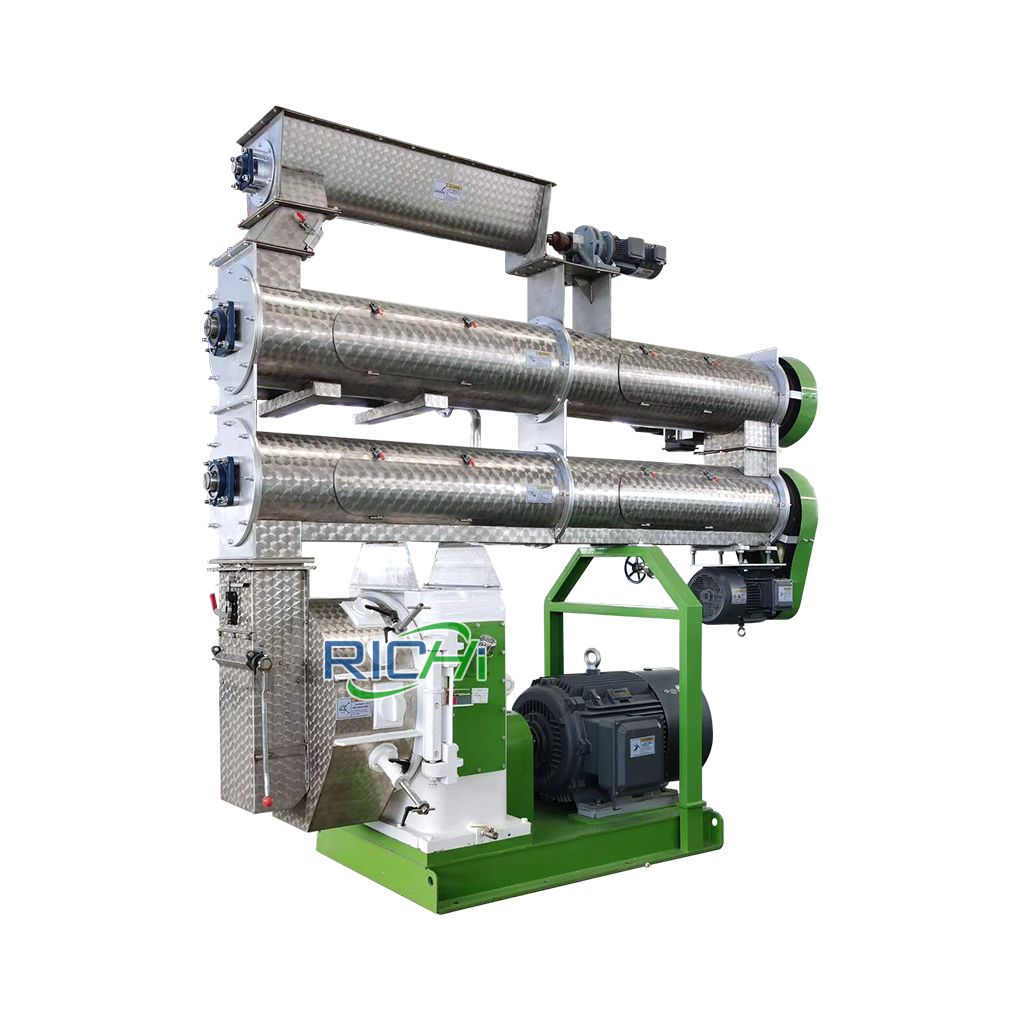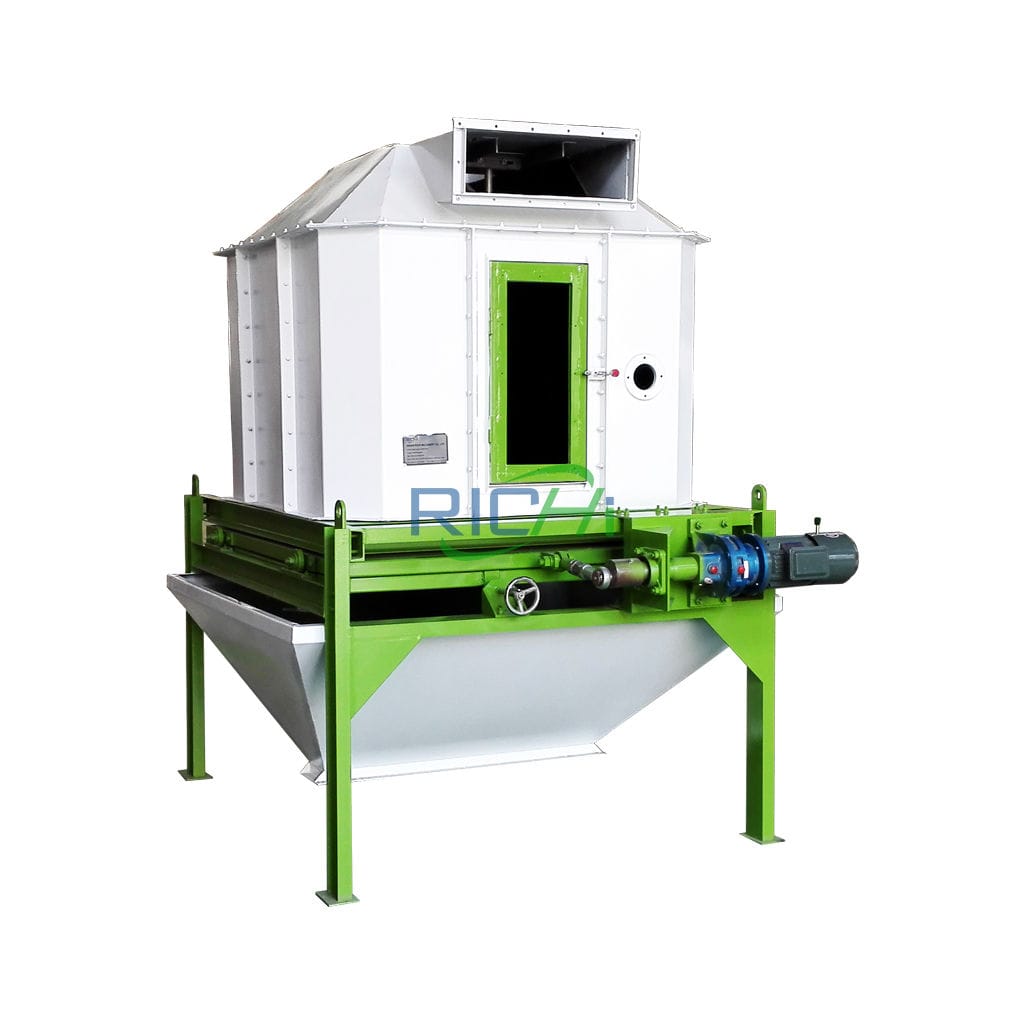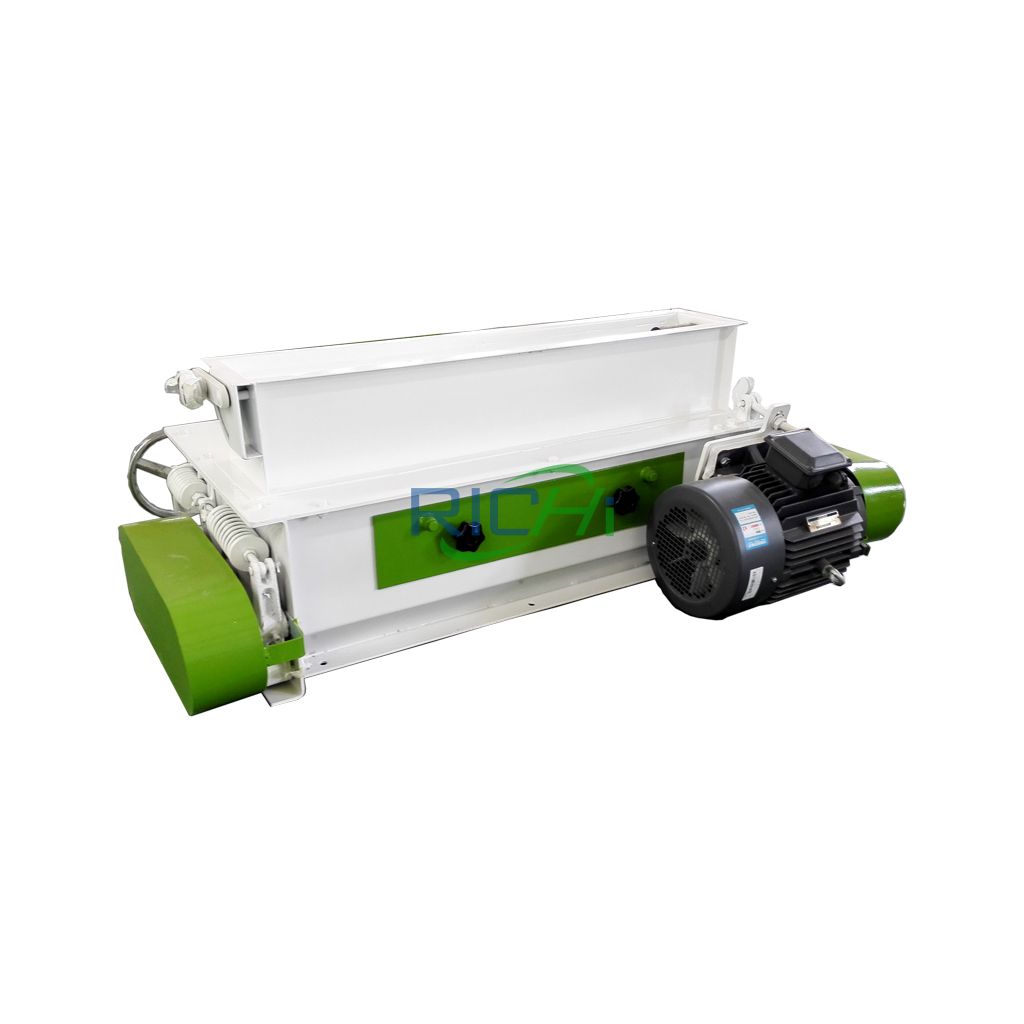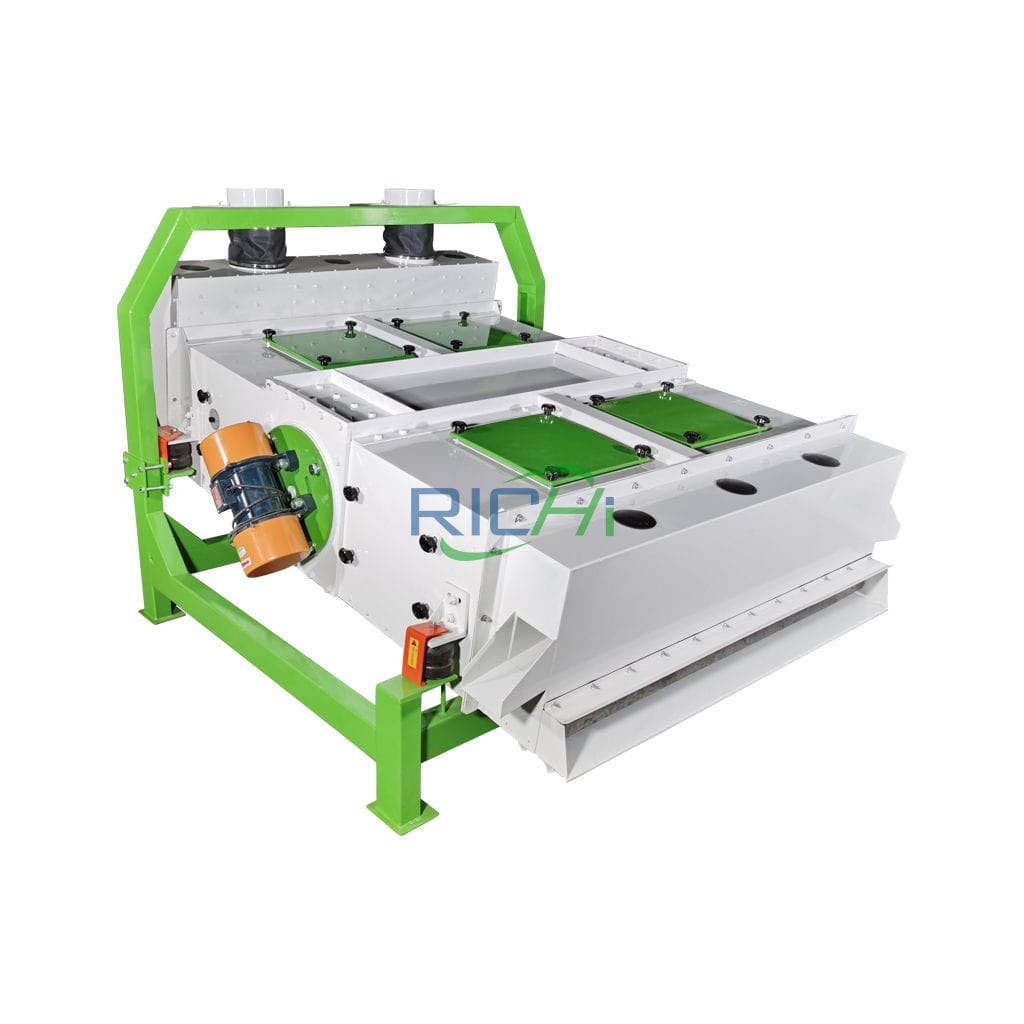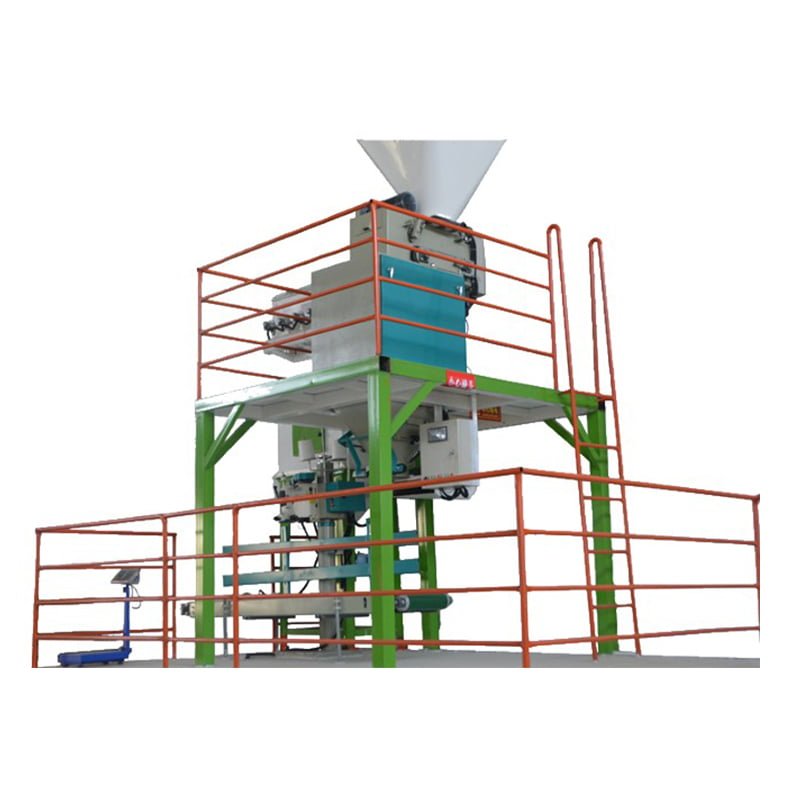
hen feed plant
The laying hen feed plant is suitable for the production of various hen feed with different size and type (pellet & mash & powder).
Capacity from 1t/h to 160 t/h, which is built for small, medium and large scale hen feed factories, chicken feed factories, poultry feed factories, and hen farms.

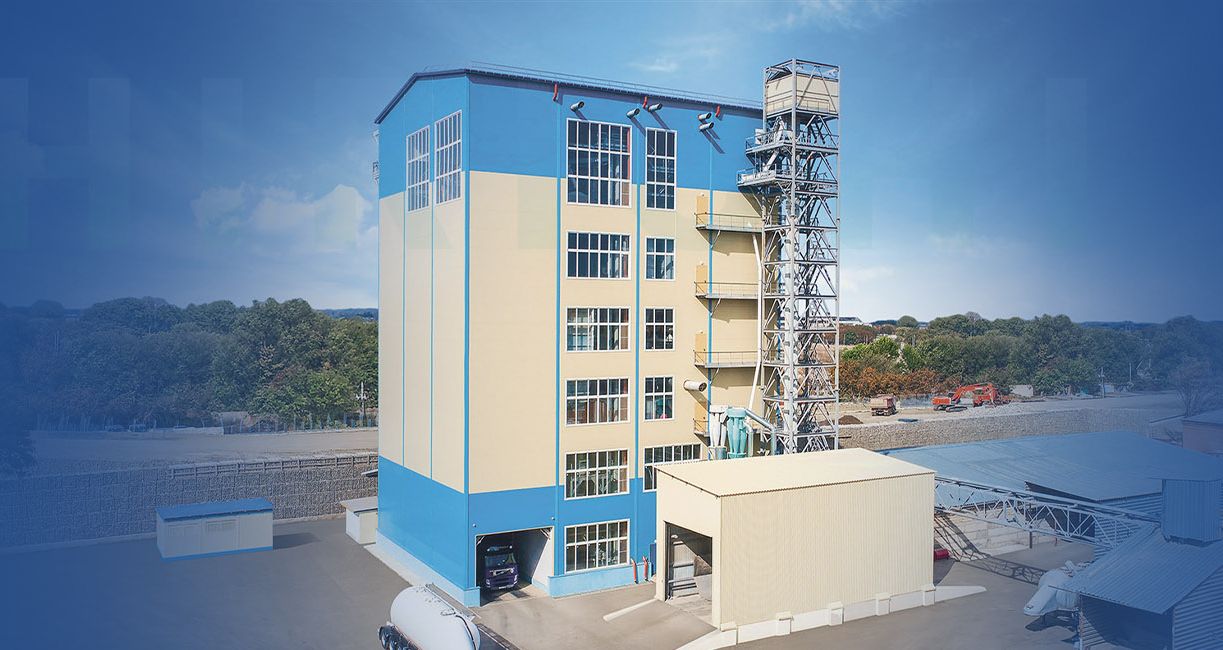
A complete hen feed plant includes cleaning machine, feed hammer mill, feed mixing machine, ring die pellet machine, cooling machine, screening machine, packaging machine, electronic control system and other auxiliary equipment.
- Capacity: 1-100T/H
- Price: 10,000-2,800,000 USD
- Feed Type: pellet & mash & powder&crumbles
- Suitable hen type: hens at different growth stages
- Applicable customers: hen feed manufacturer, hen feed factories, hen farms, chicken feed industry investors
hen feed plant types
The laying hen feed plant can process various raw materials into powdery and pellet feed to provide comprehensive and balanced nutrition for laying hens. Therefore, hen feed production lines can be divided into the following three types:
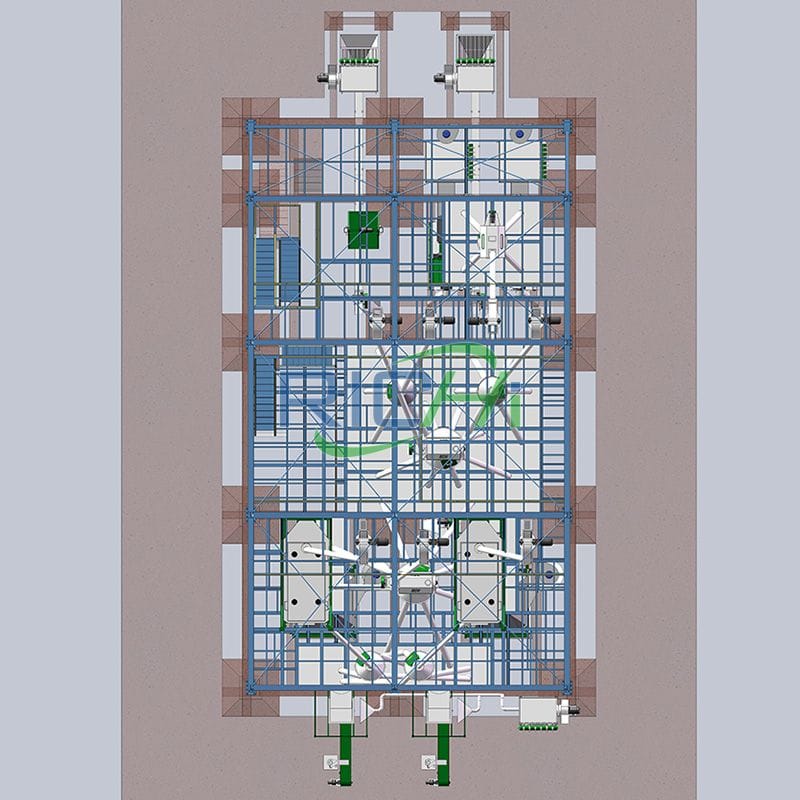
hen powder feed plant
The laying hen powder feed plant is system that processes feed raw materials into powdered feed through processes such as crushing and mixing. It is one of the commonly used feed production equipment in the breeding industry.
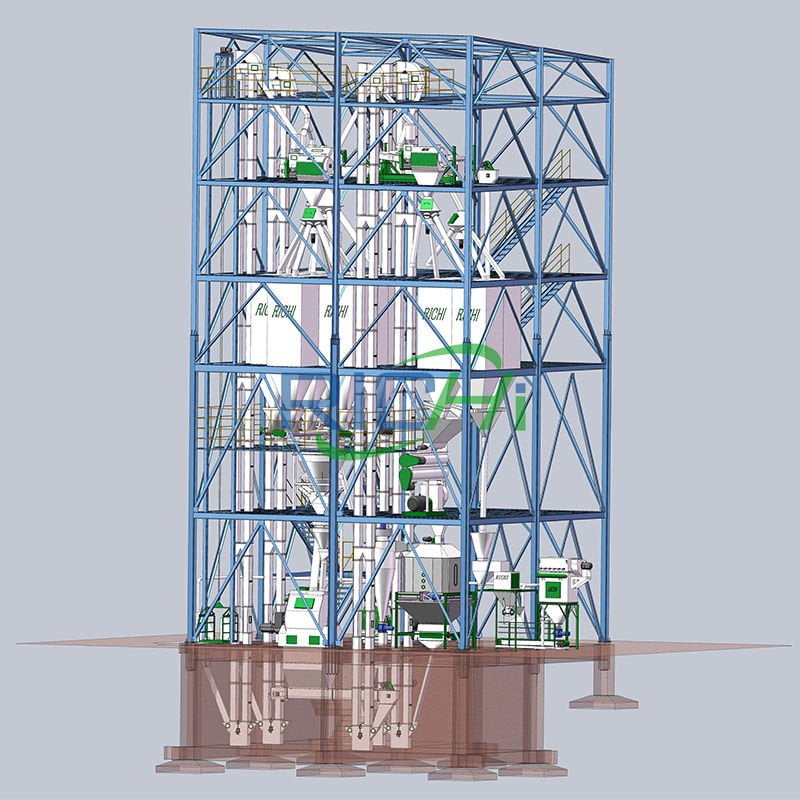
Hen pellet and crumbs feed plant
The laying hen pellet and crumble feed production line is a system that processes feed raw materials into pellet feed and crumble feed through processes such as crushing, mixing, granulation, cooling, and crumbling, screening.
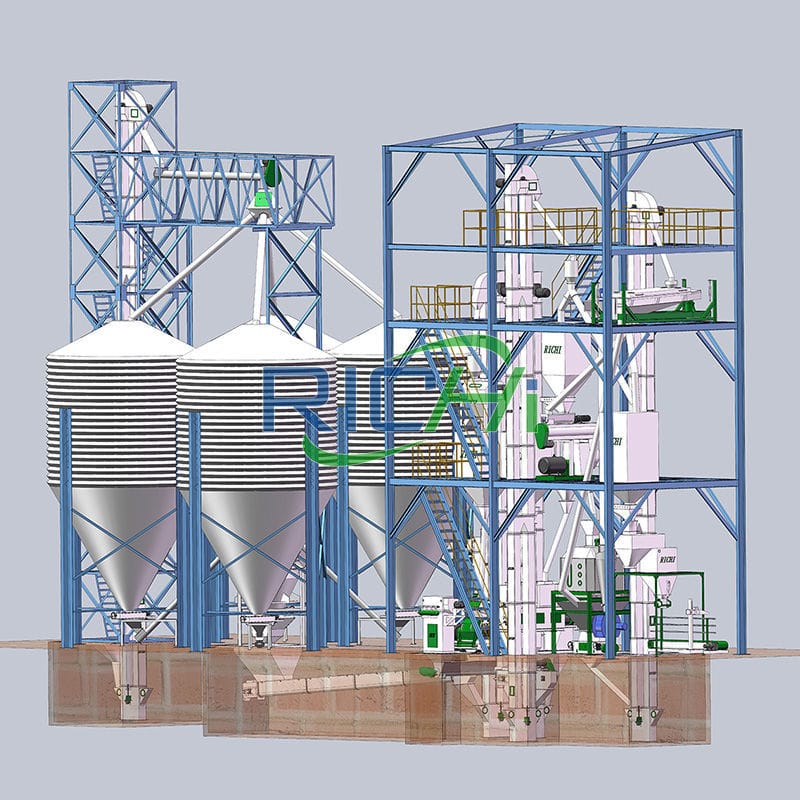
heat treatment hen mash feed plant
The heat treat process of raw dry powder feed basically consists of aging, conditioning, heat preservation, homogenization, drying, cooling, mixing and other processes, and has gradually shown its development trend to replace the use of pellet feed.
According to the current status of the laying hen feed processing market, the first two methods are still commonly used. However, with the development of laying hen feed technology, heat treatment powdered feed will become a trend.
Characteristics of laying hen feed
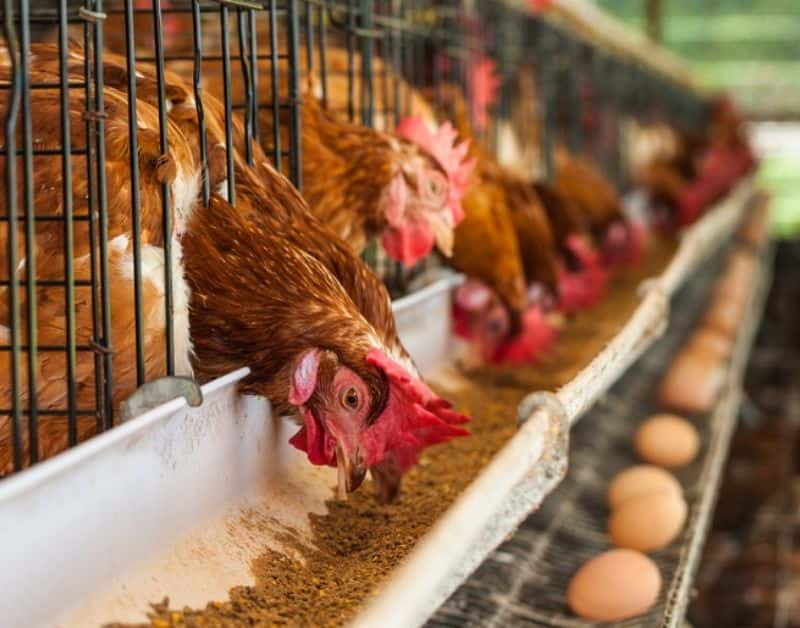
Laying hen feed generally uses large-particle powdered feed instead of pressed pellet feed. If pellet feed is used, the energy density of the feed should be adjusted and reduced to meet the requirements.
In order to save energy consumption, powdered feed is often used. The energy of powdered laying hen feed is generally 11.51 MJ/kg. At the same time, the powdered feed is required to be large-grained powdered feed, so that the laying hens need to eat for a long time and consume too much. Much energy.
From the perspective of the digestive characteristics of chickens, the purpose is to prevent laying hens in the breeding period from getting too much energy and accumulating too much fat in the body.
Otherwise, it will affect the growth and development of the chicken’s bones and internal organs, reduce the function of the reproductive system, and affect gg production rate and egg quality.
Therefore, the feed formula and feed type will affect the egg production rate. Only a reasonable formula and appropriate feed type can ensure that laying hens achieve a high egg production rate of 80% to 90%.
how to make hen feed? ——hen feed plant process
At present, laying hens mainly use mash feed or powder feed. However, in many areas, many farmers use a combination of powder and pellet feed to feed laying hens.
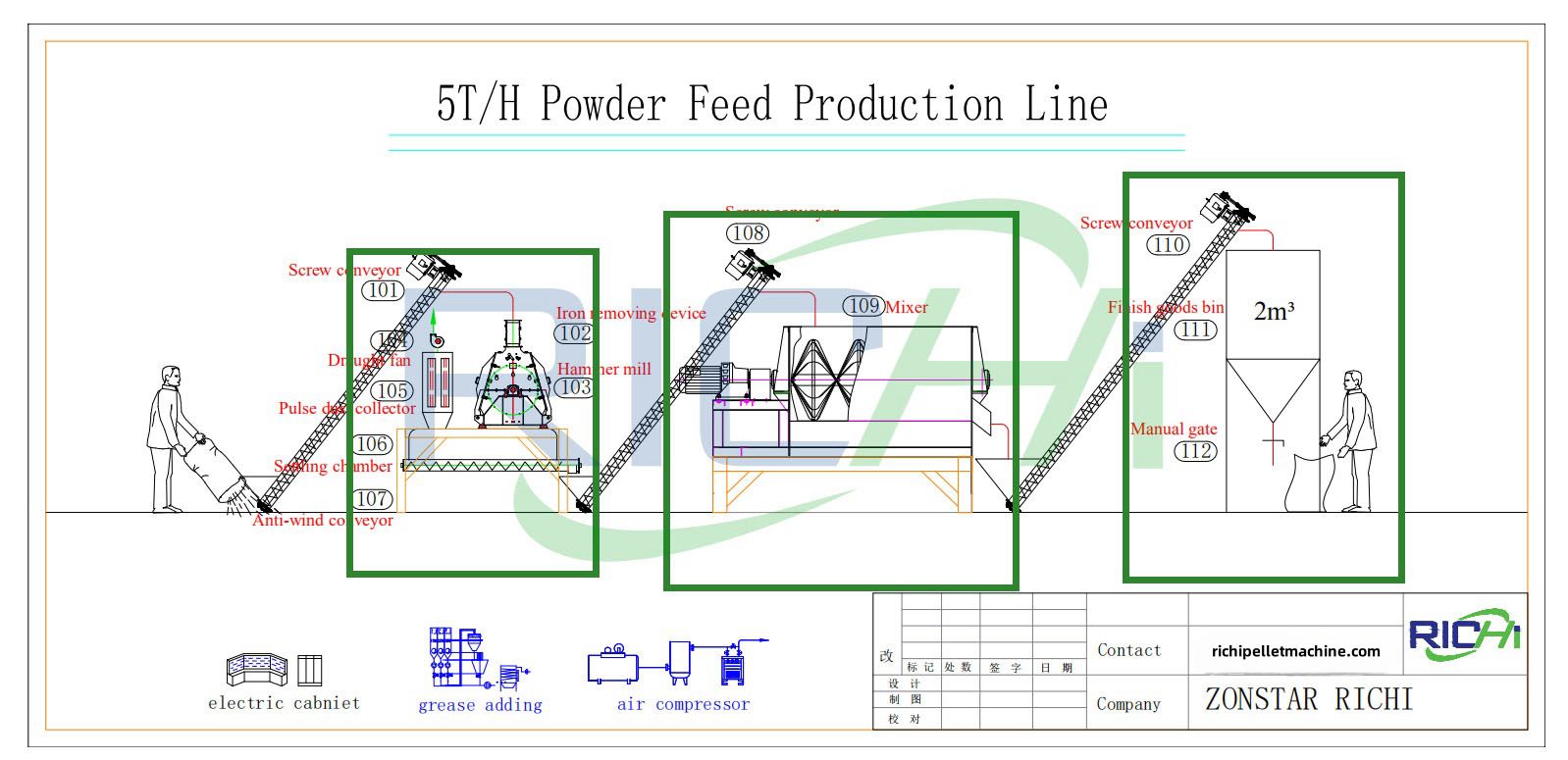
01 Receive initial cleaning process
When receiving bulk raw materials corn and soybean meal, the first thing to do in the initial cleaning and receiving process is to remove impurities in the raw materials, and then transport them to the silo as planned through receiving equipment and demagnetization equipment. During loading and unloading, raw materials must be inspected and placed in the warehouse to ensure a clean receiving environment.
02 Ingredients process
From the feeder under each batching bin to the batching scale, each raw material is weighed by the batching scale, and then transported to the powder bin, and then a small amount of premix is added, which can improve the accuracy of batching.
03 Crushing process
The crushing process refers to feeding the raw materials in the bin to be crushed into a chicken feed crusher and crushing them into powder, and then sending them to the bin to be mixed through a conveying machine for later use.
The purpose of this process is to control the particle size of the material. The efficiency of the crusher designed in this process determines the production capacity of this set of process equipment. It is also the process with the largest energy consumption in the production of powdered materials.
04 Mixing process
Unload the various crushed raw materials into the mixer, then add oil to the feed in the mixer, mix all the components evenly, and let the raw materials mix evenly. For the production of pellet feed or crumbles feed, the mixed powder will be sent to the pelleting section. If you are only processing powdered feed for laying hens, there is no need to enter the pelleting process and you can package it directly after mixing.
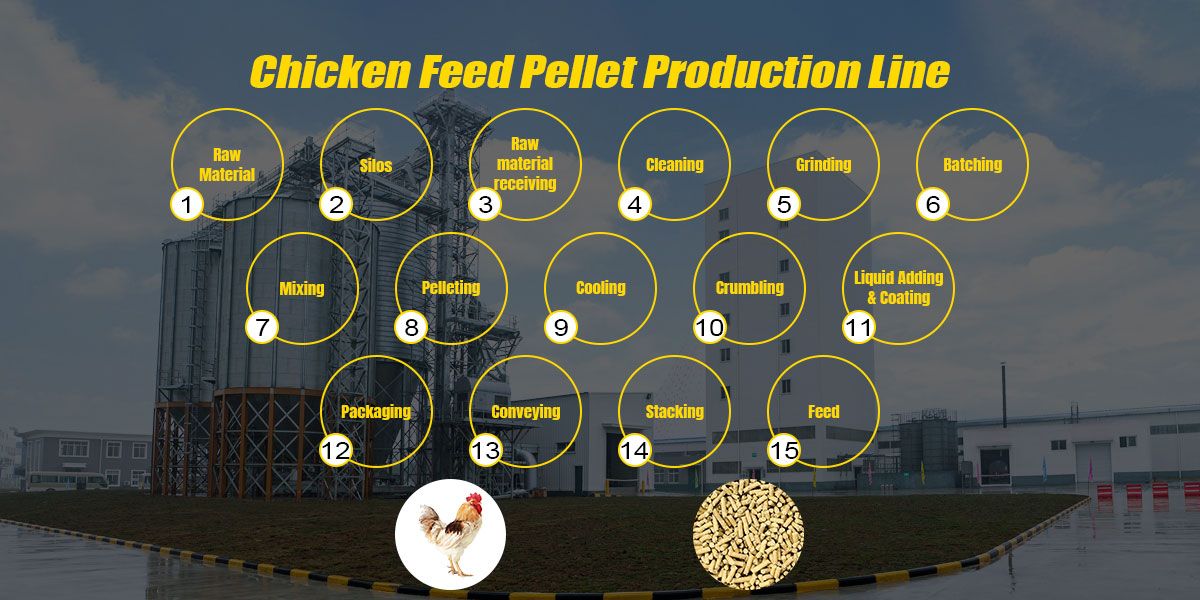
05 Granulation process
The mixed materials are magnetically separated and quenched from the silo to be granulated, then sent to the chicken feed pellet machine pressing chamber, where they are pressed into pellet feed, then cooled through the cooling tower, and screened out by screening equipment to produce standard pellet finished pellets.
During cooling, the cooling tower should be adjusted according to factors such as variety, indoor temperature and humidity, season, etc., to achieve qualified pellet temperature and humidity. If you want to process small-sized laying hen feed, you need to use a pellet crumbler to break large pellets into small pellets.
06 Finished product packaging process
The feed is weighed from the finished product warehouse by a packaging scale, packed in packaging bags, sealed with food labels, and shipped to the warehouse.
No matter where in the world and no matter which requirements the client may have to the new hen feed plant, RCIHI has a matching solution.
If you are interested in our hen feed plant process and hen feed making machines, contact us and our technical consultants will send you more information! (Find RICHI on YouTube)
Hen feed plant equipment
The hen animal feed mill equipment mainly includes hammer mill feed grinder, feed mixer machine, feed bagging machine, feed pellet machine, feed pellet crumbler and other equipment.
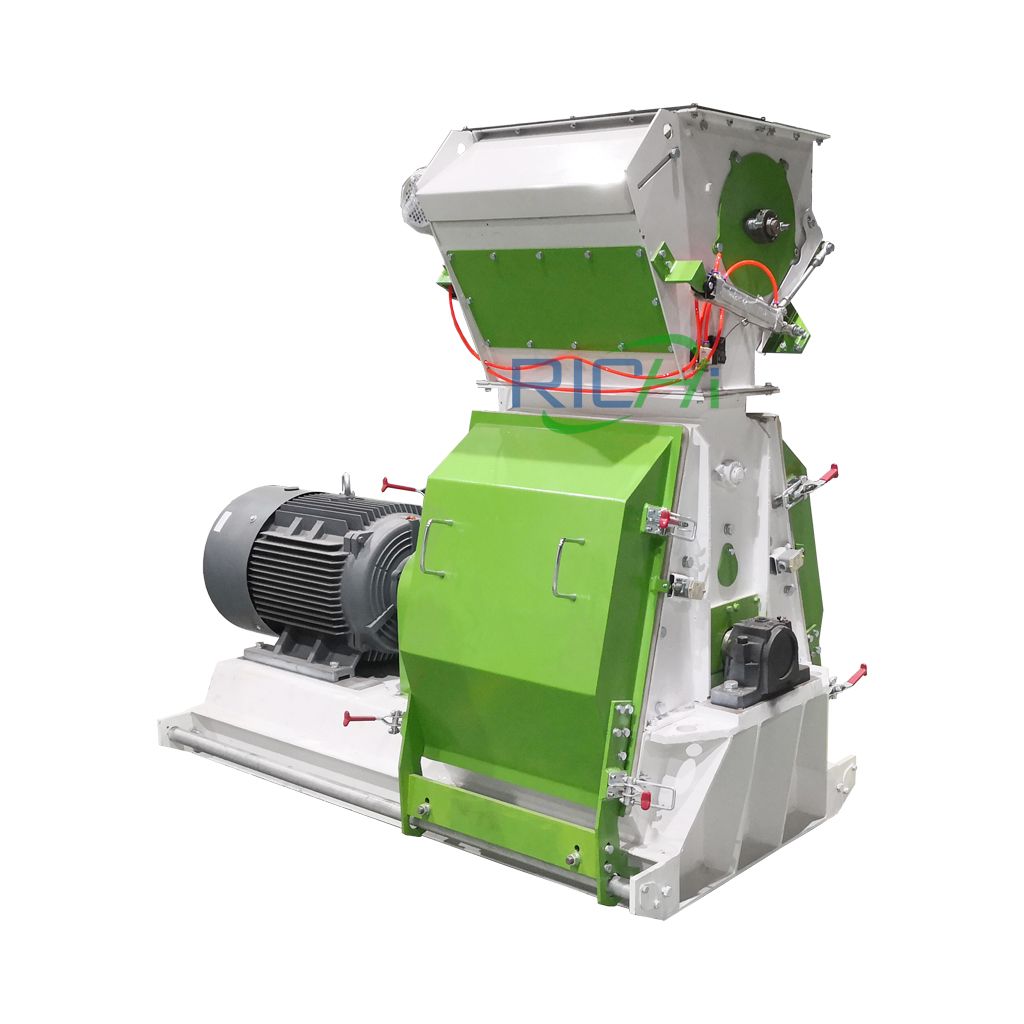
hen Feed Grinder machine
Capacity:
3-25 T/H
Main Power:
30-160 KW
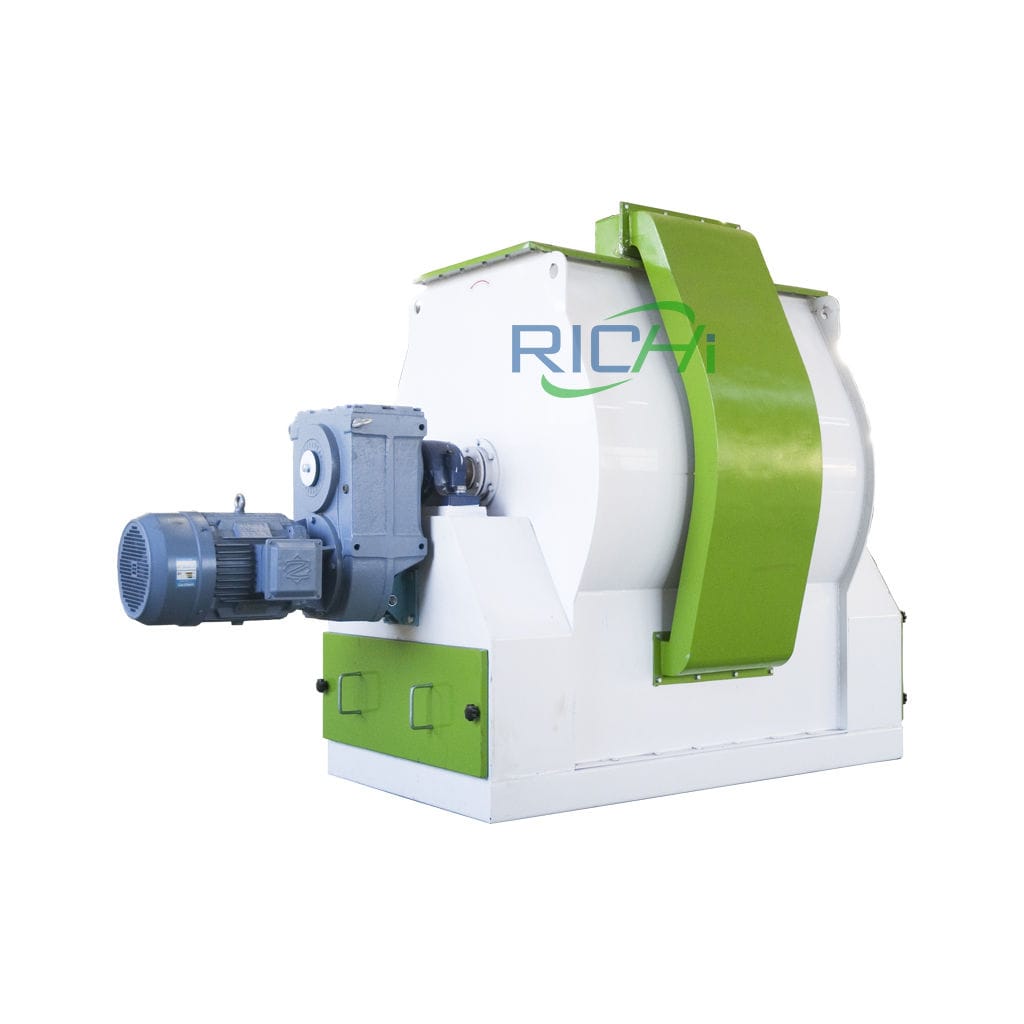
hen Feed Mixer machine
Capacity:
250-2000 KG
Main Power:
4-55 KW
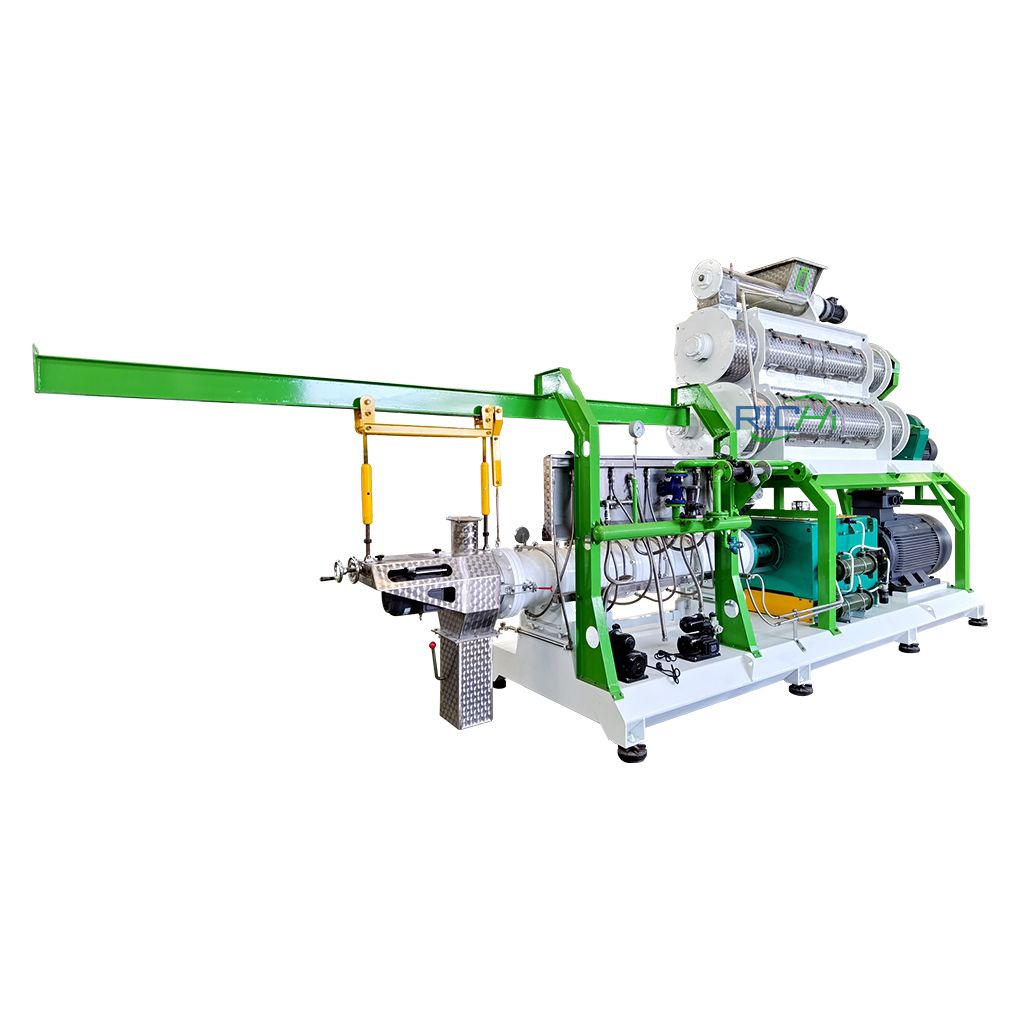
hen Feed Extruder
Capacity:
1-12 T/H
Main Power:
0.75-355 KW
Hen feed plant projects
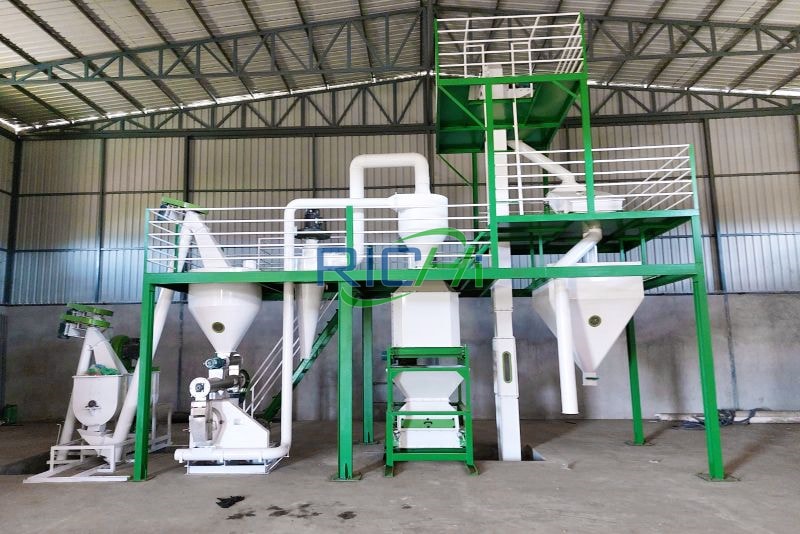
1-2T/H hen feed processing plant in Nigeria
- Date: June 30, 2020
- Feed type: laying hen feed
- hen feed plant cost: 25,000-29,000 USD
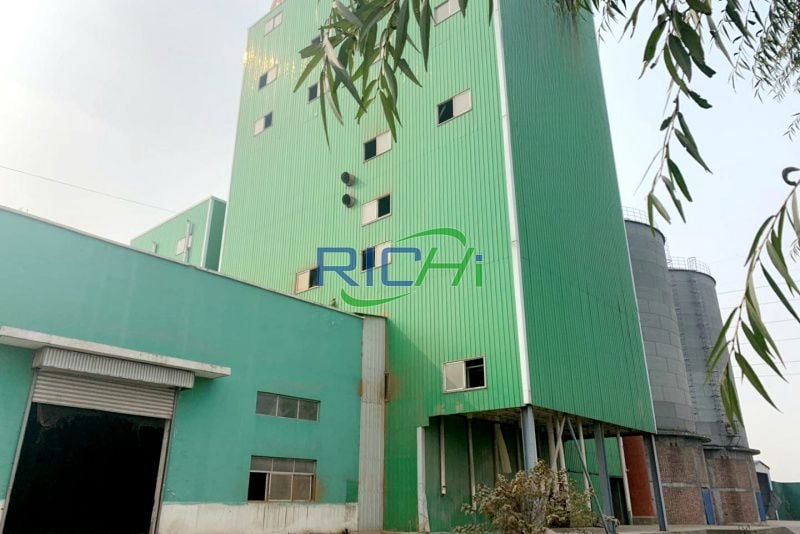
15-20T/H hen feed plant in Vietnam
- Date: December 2020
- Feed type: hen & pig feed
- hen feed plant cost: 500,000 USD
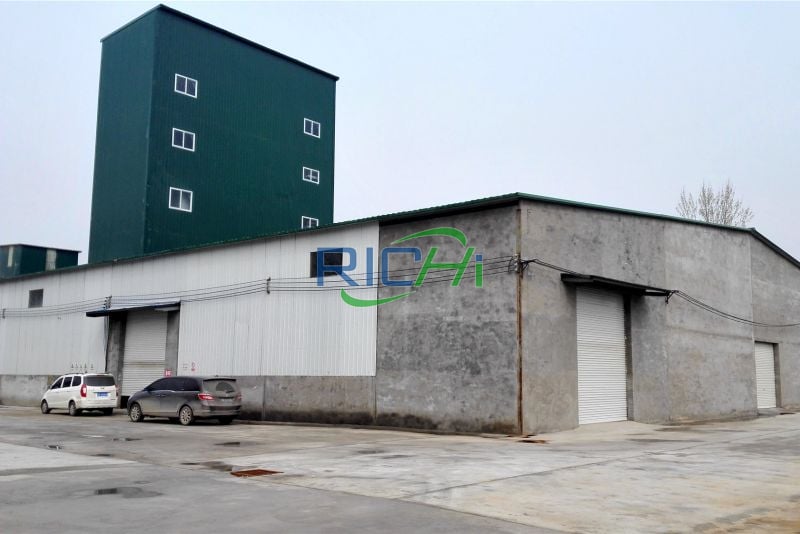
5-7 t/h hen feed pellet plant in Egypt
- date: 2022.06.09
- Feed type: chicken pellet feed
- hen feed plant cost: 97160 USD
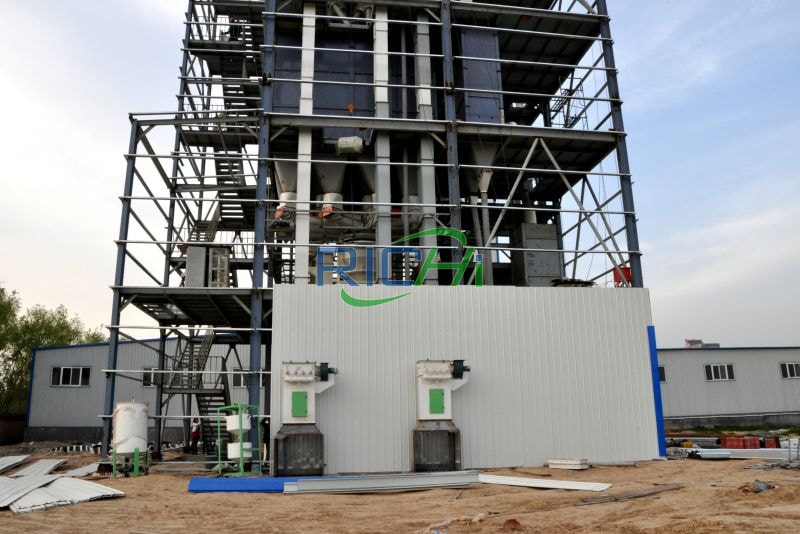
10T/H hen feed plant in the Philippines
- Project date: 2018.09.13
- Feed type: pig & chicken feed
- hen feed plant price: 460,000 USD
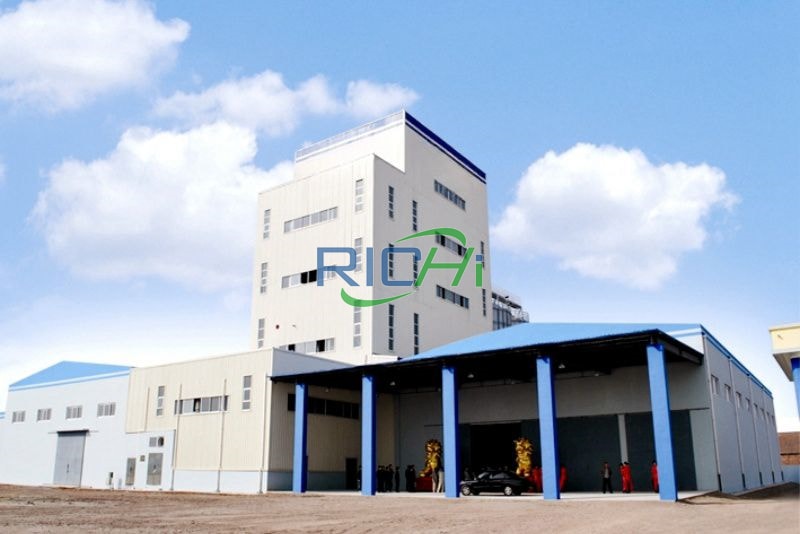
6-10T/H laying hen feed line in Algeria
- Date: Sep 21th, 2015
- Feed type: hen & broiler feed
- hen feed mill cost:80,000-400,000 USD
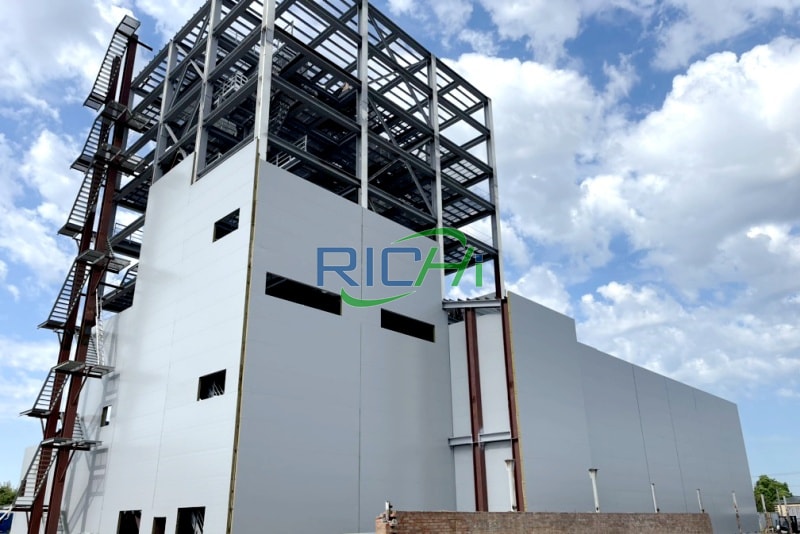
10-15T/H laying hen feed plant in Uzbekistan
- Date: July 6th, 2019
- Feed type: layer & broiler feed
- hen feed mill cost: 150,000-400,000 USD
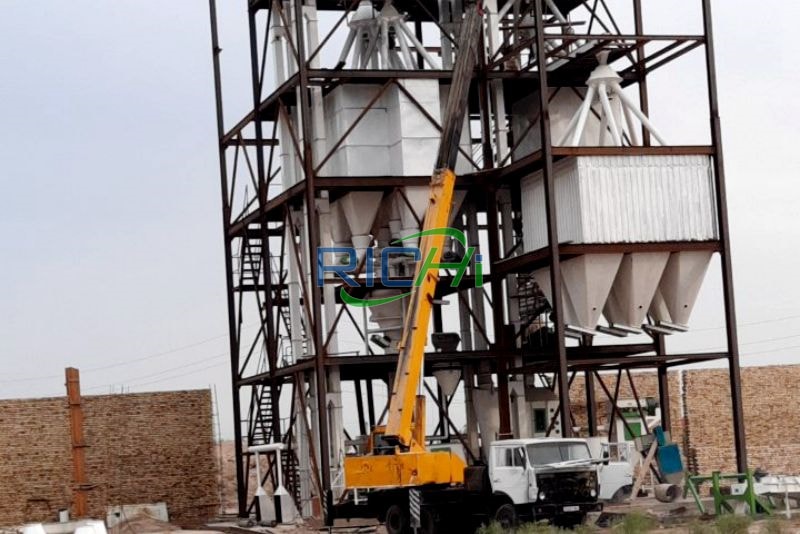
5T/H laying hen feed line In Peru
- Date: February 2021
- Feed type: chicken pellet & mash
- chicken feed plant cost: 220,000-250,000 USD
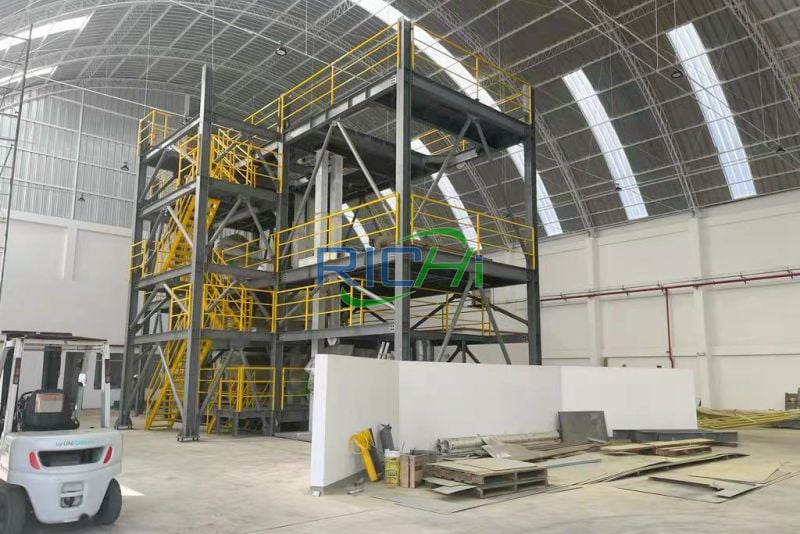
3-5T/H laying hen feed mill In Malaysia
- Date: October 29, 2021
- Feed type: layer feed powder
- chicken feed plant cost: 60,000-65,000 USD
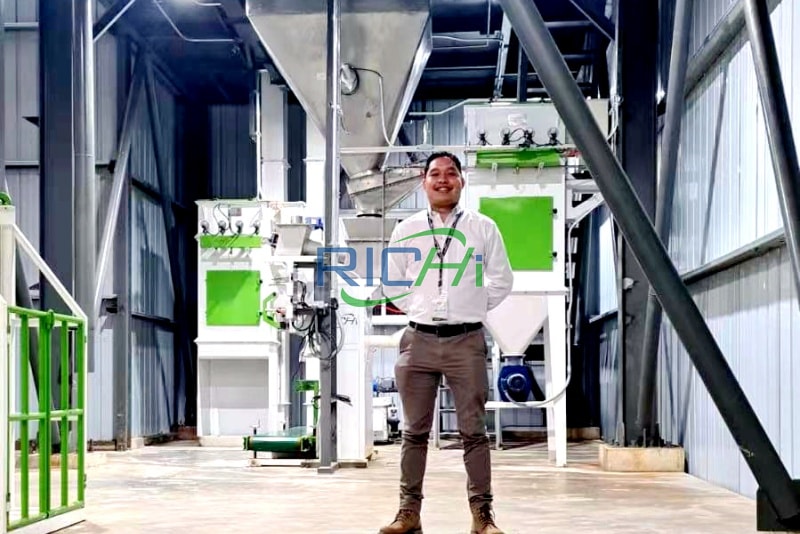
5 T/H hen feed plant In El Salvador
- date: 2022. 09.13
- Feed type: layer premix
- hen feed plant cost: 480,000 USD
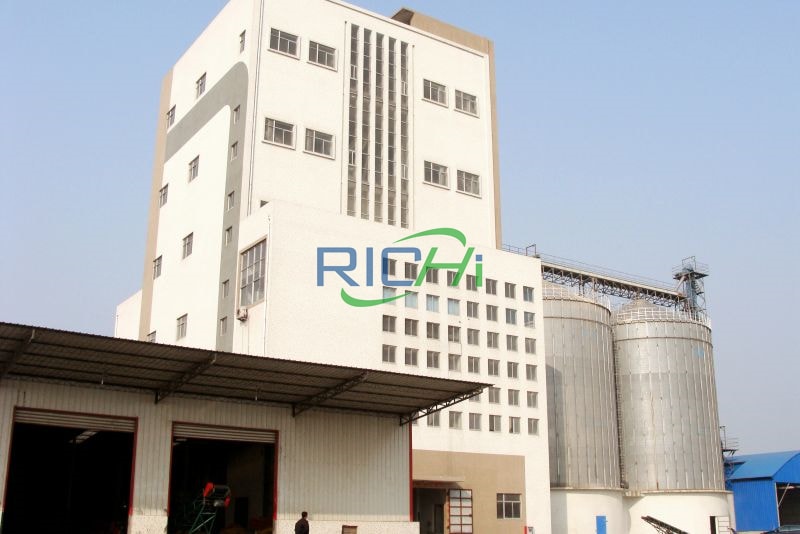
10 T/H hen feed mill plant In Thailand
- date: 2021. 07. 22
- Feed type: hen premix
- hen feed plant cost: 120,000 USD
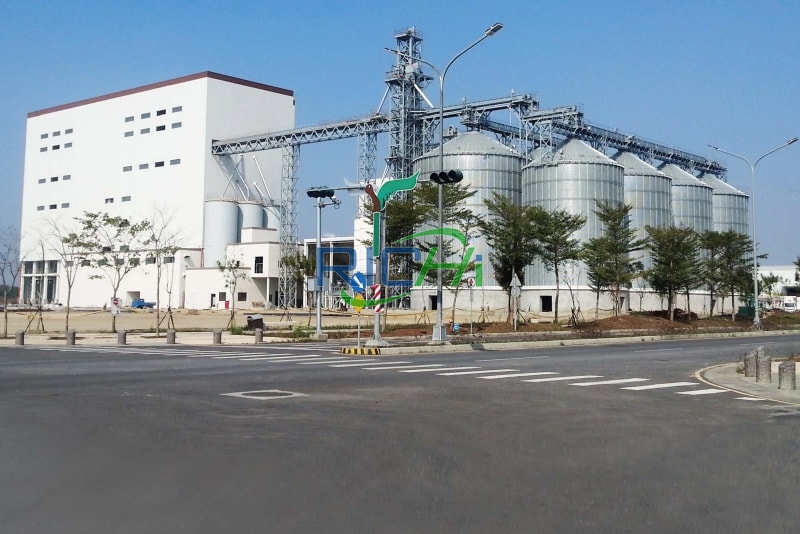
50T/H hen feed making plant in russia
- Date: June 2019
- Feed type: hen & ruminant feed
- hen feed plant cost: 960,000USD
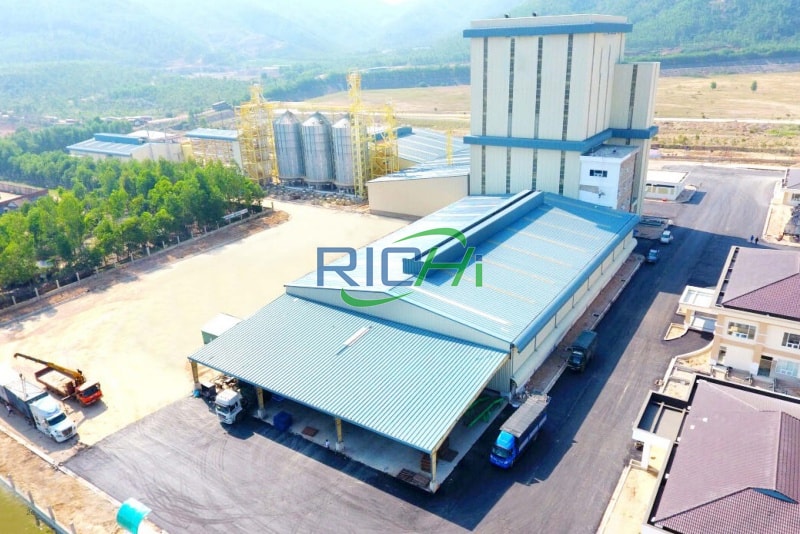
30T/H hen feed plant in Kazakhstan
- Date: December 2018
- Feed type: hen & stock feed
- hen feed mill cost: 1,250,000 USD
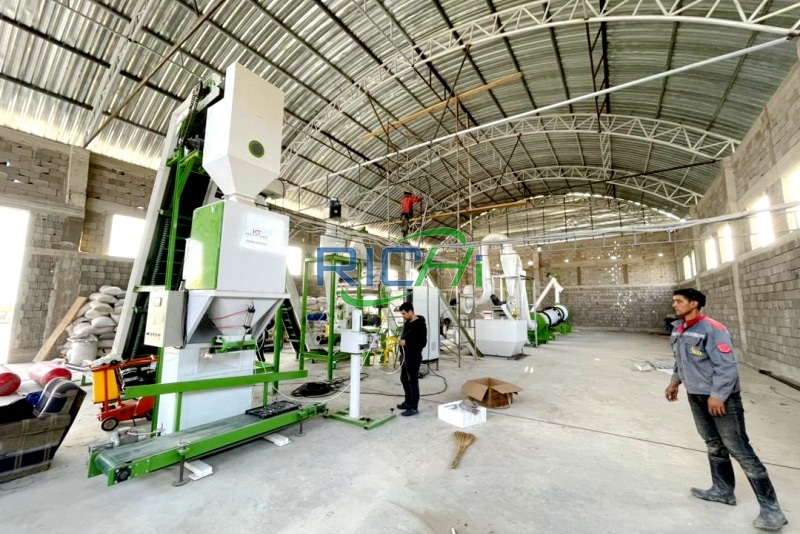
5 t/h layer feed plant in Argentina
- Project date: 2021.10.11
- Feed type: chicken & cow feed
- hen feed plant cost: 184500USD
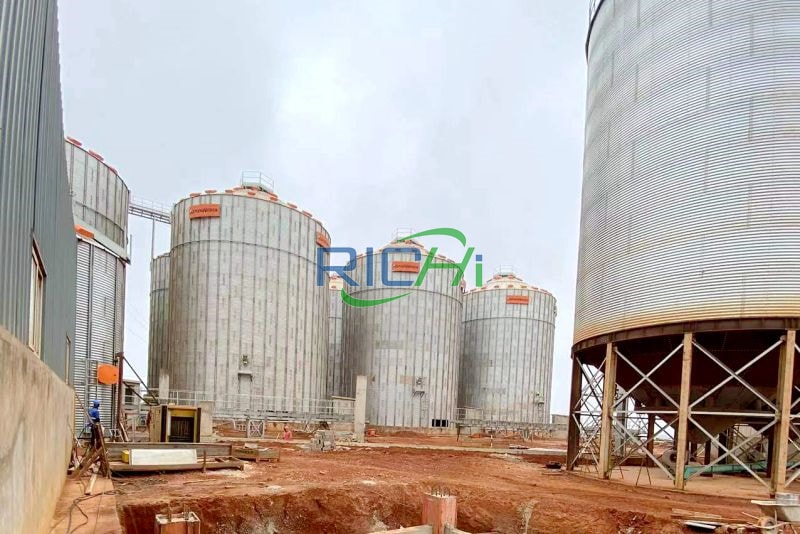
5-10 t/h layer feed plant in Ethiopia
- Project date: 2022.10.14
- Feed type: hen & cattle & goat
- hen feed plant cost: 131820 USD
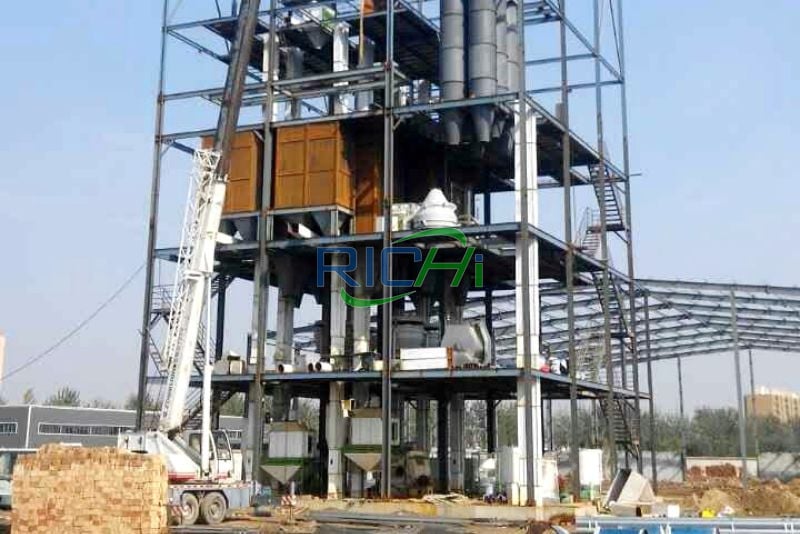
15 T/H layer feed plant In Afghanistan
- Project date: 2022.06.30
- Feed type: Hen & aqua feed
- hen feed plant cost: 159070 USD
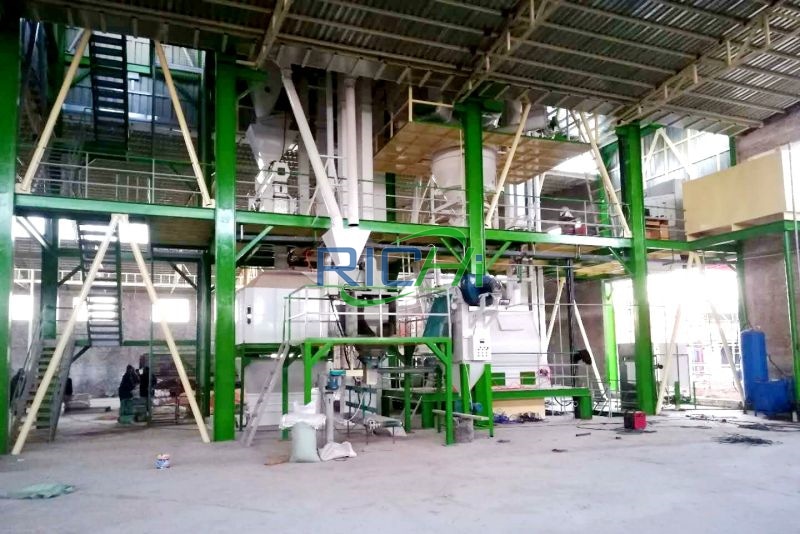
20T/H layer feed plant in united states
- Project date: 2019.05.10
- Feed type: chicken & cattle feed
- hen feed plant cost: 550000 USD
hen feed plant Videos
hen feed plant cost
The following is the price list of laying hen feed mill plant:
- 1-2 t/h hen feed mill price: 10000-50000 USD
- 3-4 t/h hen feed mill cost: 50000-120000 USD
- 5-7 t/h hen feed plant cost: 70000-250000 USD
- 8-10 t/h hen feed plant cost: 150000-300000 USD
- 12-20 t/h hen feed plant cost: 250000-580000 USD
- 25-40 t/h layer feed mill cost: 450000-850000 USD
- 50-60 t/h layer feed plant cost: 900000-1400000 USD
- 60-80 t/h hen feed plant price: 1450000-1800000 USD
- 80-100 t/h hen feed plant cost: 2000000-2800000 USD
The above is only the poultry feed manufacturing plant cost, that is, the price of the complete set of hen feed machines.
If you want to build a hen feed mill, in addition to equipment investment, you also need to consider factors including land cost, construction cost, raw material cost, water and electricity cost, labor cost, etc. The specific investment cost also needs to be determined according to the actual local conditions.
Customizer laying hen feed plant design
RICHI hen feed plant is mainly determined based on hen feed raw materials and formulas, and customer requirements for products. According to different production site conditions, we can provide customers with detailed hen feed production process plans and technical support, and can also design according to the customer’s actual installation conditions.
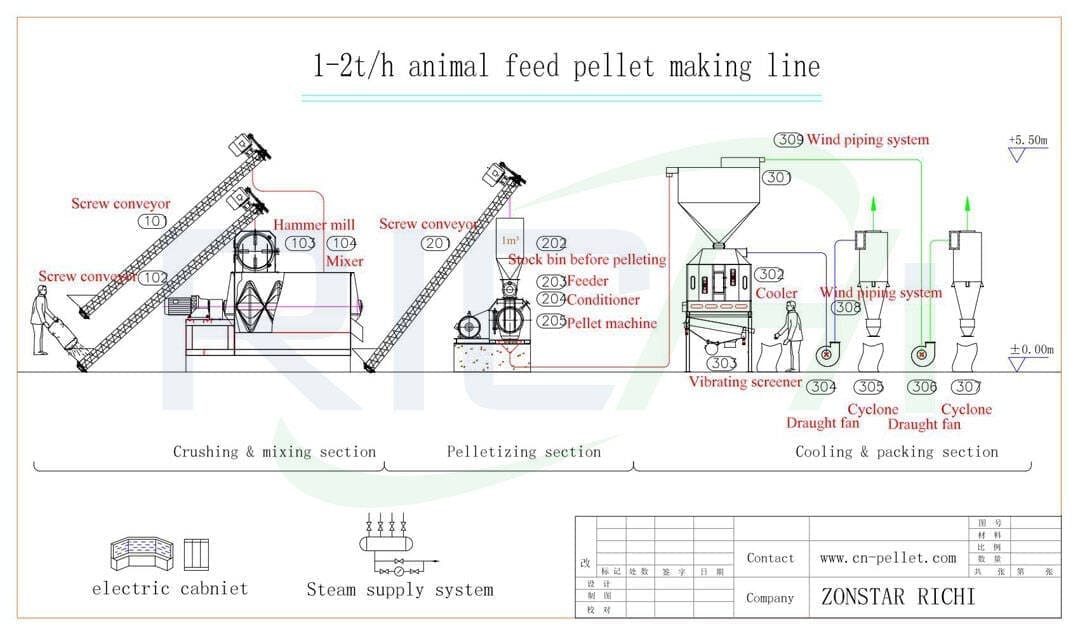
1-2 t/h hen feed plant for mash & Pellet
Our complete hen feed line is tailored to your specific needs and can be made to order. With RICHI Machinery‘s expertise in animal feed processing plans, we provide the most suitable and comprehensive feed pellet production business plan.
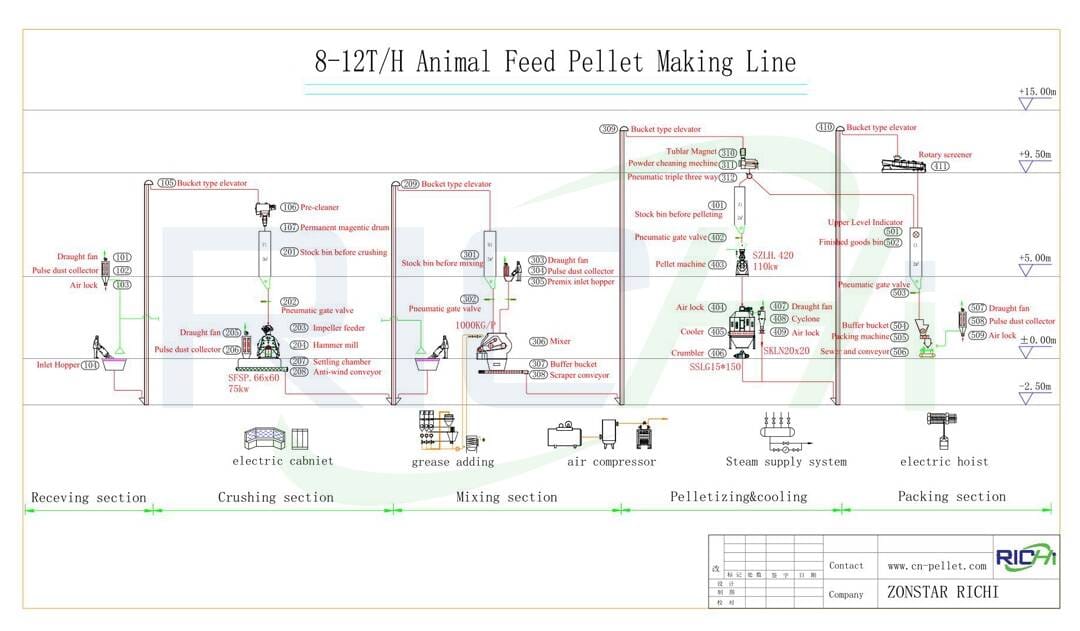
8-10 t/h hen feed plant for mash & Pellet
All machines in our hen feed processing plant are meticulously developed and manufactured to ensure top-notch quality. We prioritize the durability and efficiency of our equipment, guaranteeing reliable and long-lasting performance.
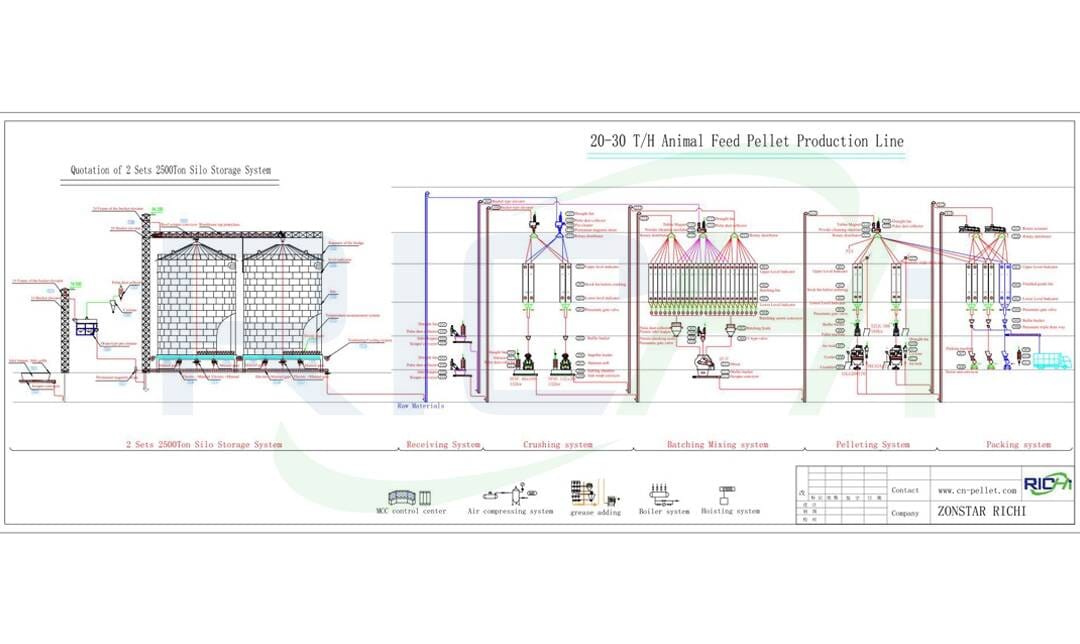
20-30 t/h hen feed plant for mash & Pellet
Our hen feed production Plant offers the flexibility to produce various types of animal feeds. Whether you’re catering to cattle, dairy cows, goats, sheep, horses, pigs, chickens, broilers, ducks, rabbits, fish, geese, or more, our line can meet your requirements.
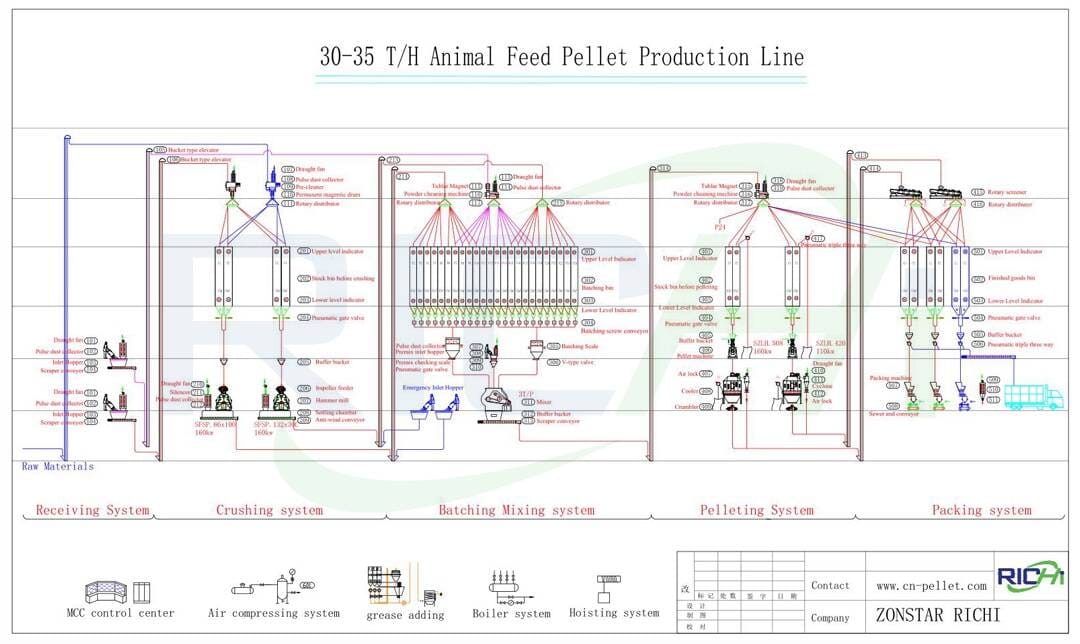
30-35 t/h hen feed plant for mash & Pellet
For those planning to establish a 40-50t/h hen feed mash and pellet plant, RICHI Machinery is a trusted manufacturer with extensive experience in feed pelletizing. They provide tailored feed pelleting plans for various animals, including cats, dogs, turtles, shrimp, fish , ducks, chickens, sheep, pigs, cattle, and more.
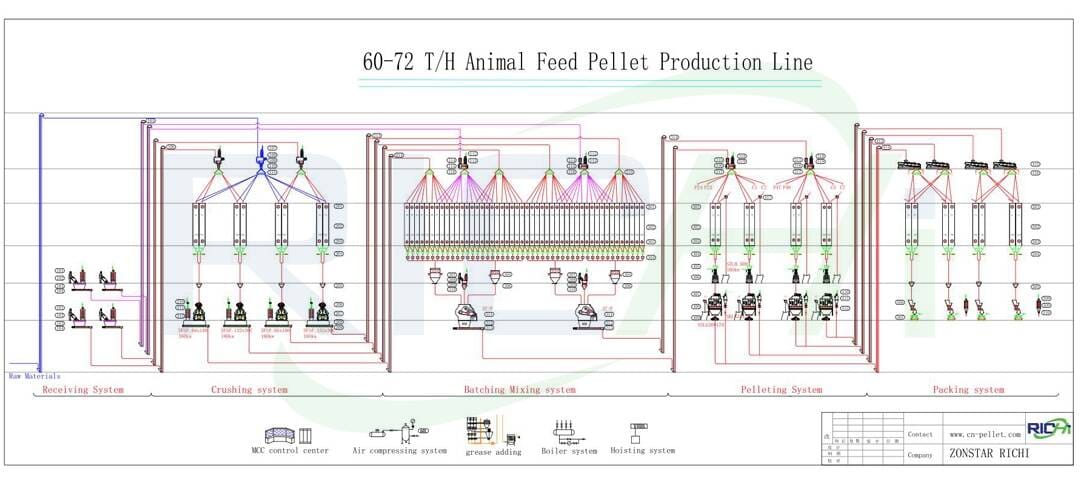
60-72 t/h hen feed plant for mash & Pellet
Hen feed milling plants provide comprehensive solutions for processing animal feed, catering to various needs in poultry, cattle, pet, and fish industries. These production lines are ideal for large-scale feed mill plants, feed factories, and cultivation factories, offering high yield and automation for fodder production.
Richi Machinery can provide the hen feed plant project design, flow chart, hen feed making machine, the project installation and commission, your staff training, after-sales service, etc. Also, our professional install team will serve you if you need it.
Advantages of hen feed plant
The RICHI hen feed making plant has a compact structure and fine production. It adopts an all-steel frame structure, has a short construction period and a small footprint. The main equipment is the hammer mill feed grinder series, horizontal twin-shaft ribbon mixer or twin-shaft paddle mixer. Fast crushing speed and high mixing uniformity.
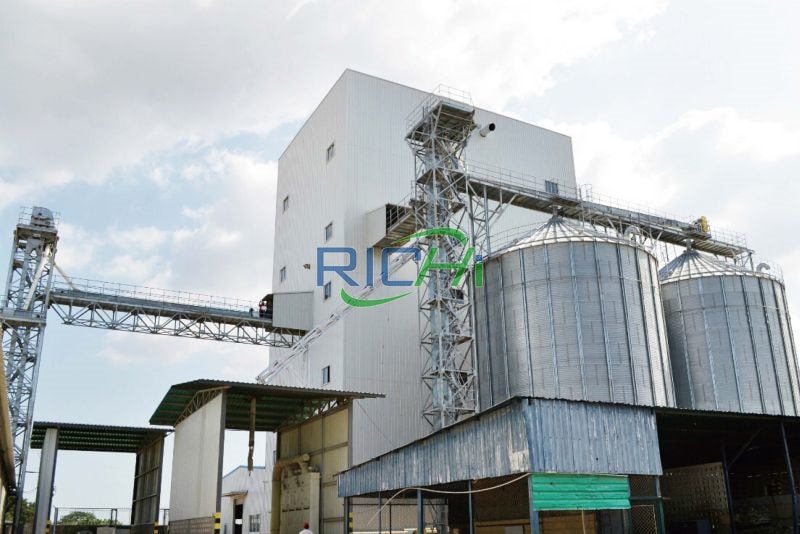
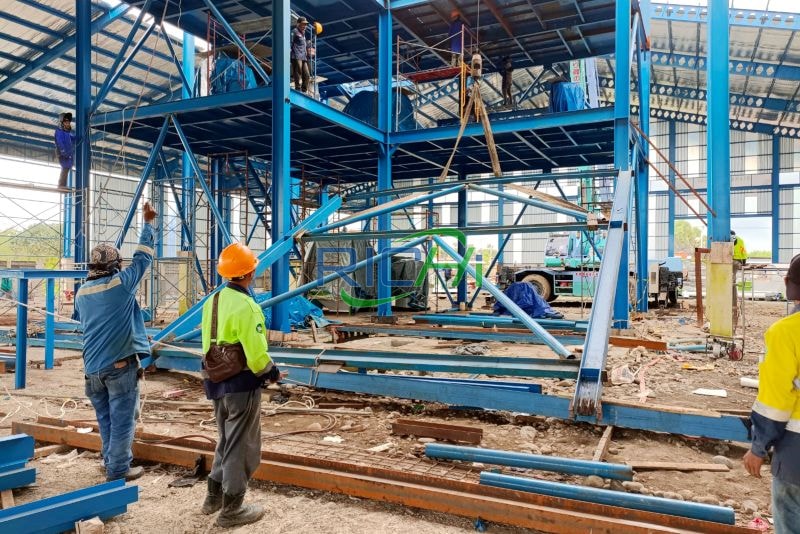
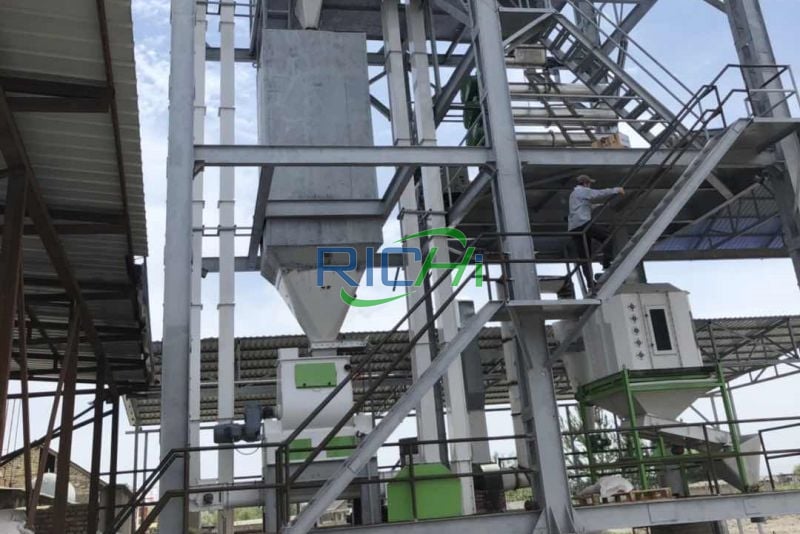
01 Professional ingredients to prevent contamination:
The carrier of the laying hen feed production line uses a dedicated batching bin to strictly prevent cross-infection during the batching process; positive pressure pneumatic transportation is used after batching to achieve clean, hygienic and safe transportation effects.
02 Accurate measurement, saving time and effort:
This laying hen feed production plant adopts a high-precision micro-component dispensing system to ensure accurate batching and measurement of various trace elements. Various trace elements can be added to improve animal disease prevention and resistance.
03 Efficient mixing, low residue rate:
The laying hen feeds plant is professionally equipped with high-efficiency mixing technology, which has fast mixing speed, high uniformity and low residue rate, ensuring mixing accuracy, reducing energy waste and reducing production costs.
04 Wide applicability
It is suitable for compound feed processing plants and large-scale breeding plants. It can process pig feed, cattle and sheep feed, poultry feed, chicken feed, etc. It is suitable for a variety of feed types and has good versatility.
Why invest in hen feed production business?
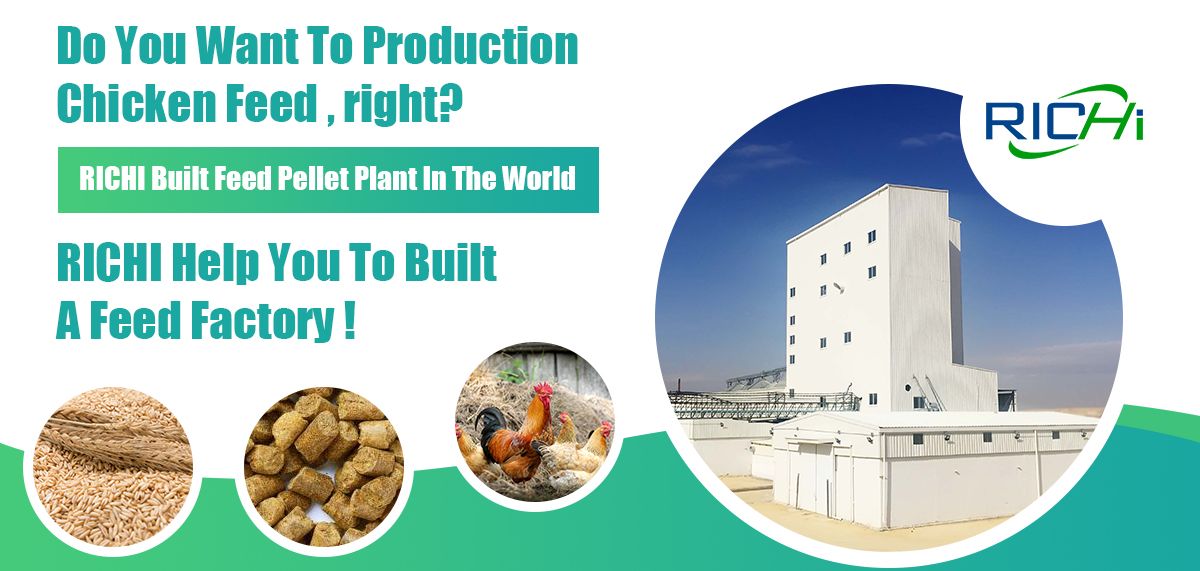
The laying hen feed market size will be US$118.18 billion in 2021, and is expected to grow from US$125.63 billion in 2022 to US$217.7 billion in 2030, with a compound annual growth rate of 6.3% during the forecast period (2023-2030).
Feeding laying hens feed can help them lay more eggs at a healthy weight and help protect them from disease while they are laying. The growing demand for laying hen feed can be attributed to the fact that it provides all the necessary ingredients and nutrients to laying hens.
Demand for eggs is growing around the world due to rising per capita income, growing awareness of the health benefits of eating eggs, and the abundance of these foods. Global laying hen feed demand is expected to increase owing to rising demand for healthy eggs during the forecast period.
Hen feed plant manufacturer – RICHI MACHINERY
Free Design Layout
Free professional hen feed plant layout based on your land area or your requirements. Engineers will confirm the feed production solutions by the drawing to communicate exactly and faster.
Quality Control
The drawing and design will be confirmed twice above before production. SKF bearings, Siemens motor are preferred for all equipment. The structures are made by laser cutting, and powder coating step by step.
Professional Service
The professional sales team will guide you how to choose the most suitable products. We can provide different hen poultry feed plant solutions and according to your requirements and needs.
Company Mission
Sticking on the product developing ideas of simplicity, perfection, quality and innovation, we have been always focusing on designing and manufacturing hen feed plant machines for the past, also in the future.
Certification
All the main products had passed ISO9001, CE, SGS certifications, we provide all quality product and it proved that our machine is very popular in many countries and regions.
Abroad Office And Agent
You can have the direct access to the local sales person, now we are also looking for more agents in different countries, please contact us if you have any interest.
FAQs of hen feed plant

Key measures to improve the efficiency of laying hen feed plants
Improving the efficiency of the laying hen feed plant is the key to increasing production capacity and reducing production costs. The following introduces several key measures to improve the efficiency of the laying hen feed plant.
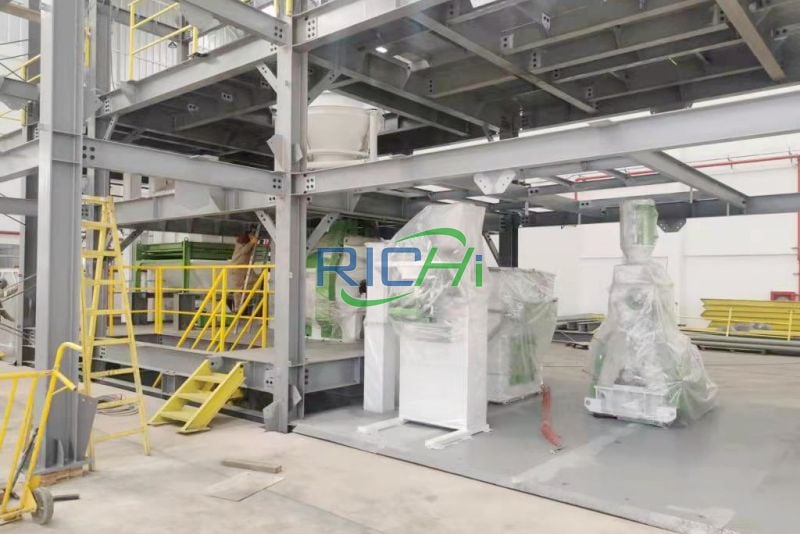
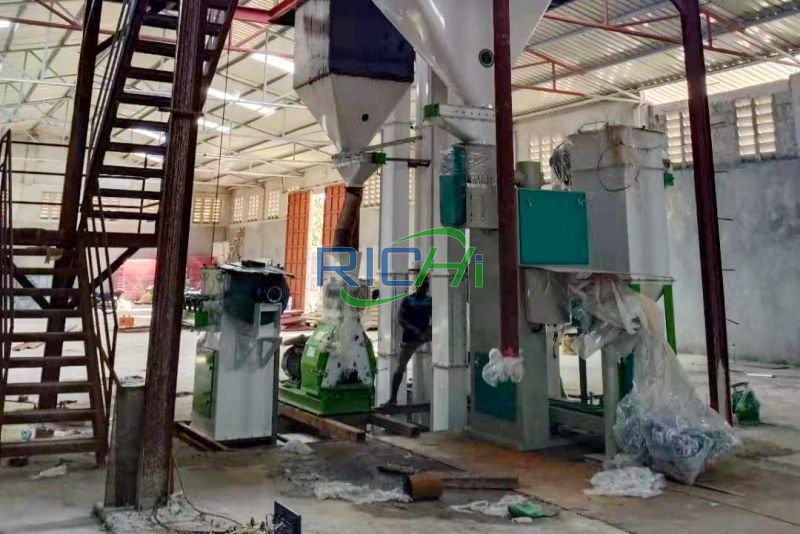
- Automated production:
The introduction of automated equipment and control systems can greatly improve the efficiency of the laying hen feed plant. Automated production can reduce manual operations, increase production speed and consistency, and reduce human errors in production.
Through automated equipment and control systems, precise batching, mixing and packaging processes can be achieved and the production efficiency of the production line can be improved. - Process optimization:
Optimizing the process flow of the laying hen feed plant can improve production efficiency. By analyzing and evaluating each process link, we can identify bottlenecks and inefficient parts, and take improvement measures, such as rationally arranging process sequences, optimizing equipment configuration, improving operating methods, etc., to improve the overall efficiency of the production line. - Equipment upgrades:
Regularly evaluating and updating hen feed mill equipment is an important measure to improve efficiency. The use of advanced equipment and technology can improve the production capacity and quality stability of the production line. Equipment upgrades may include more efficient mixing equipment, crushing equipment, packaging equipment, etc. to meet growing capacity needs. - Energy management:
Taking energy-saving measures, such as optimizing the energy supply system, using efficient hen feed plant equipment and energy-saving technologies, and rationally arranging production plans, can reduce energy consumption and improve energy utilization efficiency, thereby reducing production costs and improving efficiency. - Personnel training and management:
Proper personnel training and management are crucial to improving hen feed plant efficiency. Employees should receive professional training and be familiar with operating procedures and safety regulations to improve work efficiency and quality. In addition, rationally arranging work plans, optimizing staffing, establishing incentive mechanisms, etc. can also help improve employees’ work enthusiasm and productivity. - Data analysis and optimization:
By collecting and analyzing hen feed plant data, potential problems and improvement opportunities can be discovered. Using data analysis tools and technologies, bottlenecks in the hen feed plant can be identified, production plans can be optimized, failures can be predicted and prevented, thereby improving production efficiency and product quality.
In short, improving the efficiency of the laying hen feed plant requires comprehensive consideration of factors such as equipment, technology, energy management, personnel training, and data analysis.
By introducing automated hen feed production, process optimization, equipment upgrades, energy management, personnel training and management, and data analysis and optimization, the efficiency and competitiveness of the hen feed plant can be improved, and higher production capacity and economic benefits can be achieved.

How to save energy consumption and reduce costs in the main sections of hen feed plants
Saving energy consumption is something that every hen feed factory should pay attention to. In order to reduce energy consumption and increase output in the daily hen feed production process, RICHI recommends that you need to do the following.
1. How to save energy consumption in the power transmission system
Feed machinery and equipment transmit power through transmission devices such as bearings, reducers, and transmission belts. Therefore, we must first ensure the normal operation and lubrication of the transmission device to reduce the loss of power during the transmission process to achieve energy saving effects.
- Select the appropriate type and dosage of lubricant to ensure that the hen feed plant equipment has a good working environment and condition;
- Keep the transmission belt at the appropriate tension, replace the worn transmission belt, and use pulleys and other devices that match the transmission belt;
- Avoid vibration of the transmission equipment caused by loose chain, and keep the chain at an appropriate tightness;
- Keep the transmission device clean and free of dirt and waste to avoid excessive local heat collection. Allow air to flow freely around the gear reducer;
- When the hen feed plant equipment must work at more than one speed, use AC variable frequency transmission device instead of mechanical and adjustable belt transmission;
- Use as little or avoid the use of pneumatic conveying systems as possible.
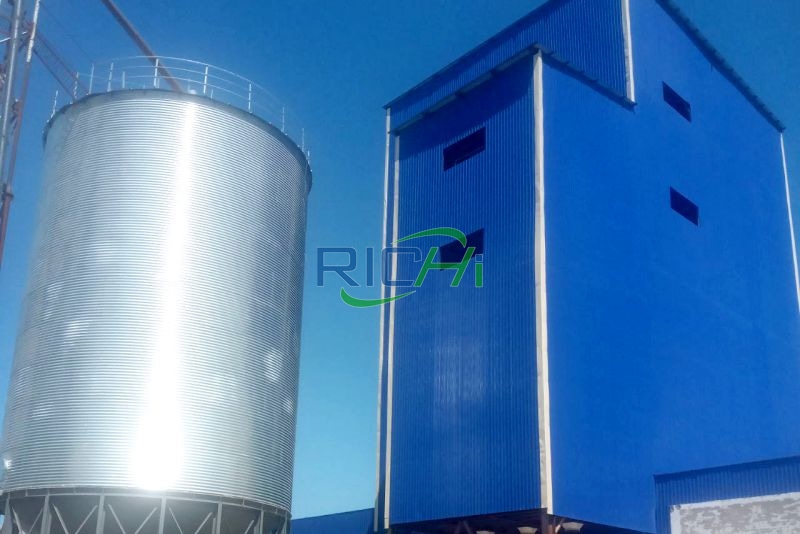
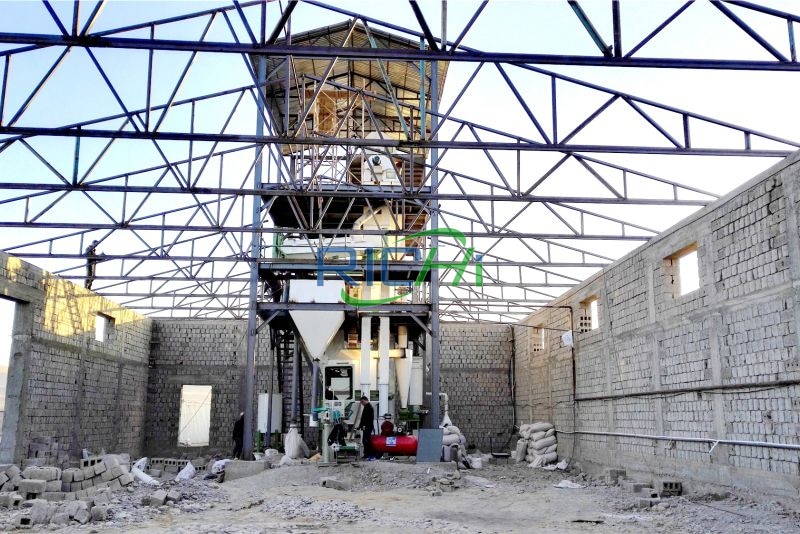
2. How to save energy consumption in the crushing process
- Reverse the direction of the hammer or replace the hammer and bag in time to improve the crushing efficiency;
- Keep the negative pressure of the air auxiliary system in good condition to increase production. After the pulse fan stops, the pulse bag is cleaned in a delayed manner to ensure that the bag is clean, which can extend the use time of the bag and improve the efficiency of the fan;
- Use a variable speed feeder to hen feed the material evenly and keep the load of the crusher constant;
- In the micro-grinding operation, mixing difficult-to-grind and easy-to-grind raw materials for micro-grinding can improve the micro-grinding efficiency;
- Add classification hen feed plant equipment after primary crushing and fine crushing to reduce excessive crushing of raw materials.
3. How to save energy consumption in mixing and batching processes of hen feed plant?
- Improve the operational skills and coordination level of central control personnel.
- When the operator receives the task at work, he or she will decide the type, order and quantity of materials to be fed by the material feeders based on the production task order, the amount of raw materials in stock and the capacity of the batching warehouse, so as to ensure that the mixer works continuously and will not stop production due to a shortage of certain raw materials;
- Reasonable feeding will ensure that the pulverizer starts less times and the idle running time is the shortest within a certain period of time;
- When pellets and concentrated materials are produced at the same time, determining the appropriate switching time is an important guarantee to maintain the continuous production of the hen feed pellet making machine and the mixing function.
- If the central control personnel are not skilled in operation and have low coordination ability, the production process will inevitably suffer from problems such as unsmooth production or production shutdown due to material shortage.
- Therefore, improving the operation and coordination level of central control personnel is an important aspect of improving hen feed plant production efficiency.
- Use a variable frequency speed controller for the spiral feeder to keep the feeder motor load stable and efficient.
- The design of the silo and weighing bucket should ensure that the materials are completely discharged by gravity without using vibration discharge or mechanical discharge or mechanical discharge device.
- Correctly set the ingredients and mixing cycle, reasonably arrange manual feeding and liquid addition operations, and improve the efficiency of ingredient mixing operations.
4. How to save energy consumption in the granulation process
- When purchasing the ring die of the poultry feed pellet making machine and the screen of the feed grinder, the opening rate should be increased as much as possible while ensuring the strength, thereby improving production efficiency and reducing power consumption.
- Reasonably control the output and reasonably adjust the die roller gap to improve the granulation efficiency and extend the life of the ring die and pressure roller.
- Use the ring die repair machine to repair the ring die in time to improve the granulation production efficiency.
- Adjust or replace the paddles of the conditioner of the chicken feed pellet machine, and add a stirring rod to the conditioner to improve the conditioning effect and production efficiency.

Key technologies and practical experience in hen feed plants
The production of hen feed is one of the important links in agricultural production and plays an important role in the development of poultry breeding industry. The hen chicken feed mill plant is an essential system to achieve large-scale and standardized production.
In the hen feed production process, we need to master the following key technologies:
- Cleaning and dust removal technology. Ensure that the raw materials used are free of impurities, and operators must take dust-proof measures to ensure that the production site is clean and hygienic.
- Mixing technology. Different types of raw materials should be selected and mixed according to the nutritional needs of different species, and mixed in strict accordance with the formula proportions to ensure the balance and nutritional value of the feed.
- Processing technology. Choosing appropriate layer feed processing technology can improve the crushing rate and digestibility of feed, increase the utilization efficiency of feed, and reduce the cost of feed. Currently, commonly used processing technologies include granulation, extrusion and cooking.
- Quality inspection technology. Ensure that the quality of feed meets various standards and requirements, and improve the qualification rate and safety of hen feed.
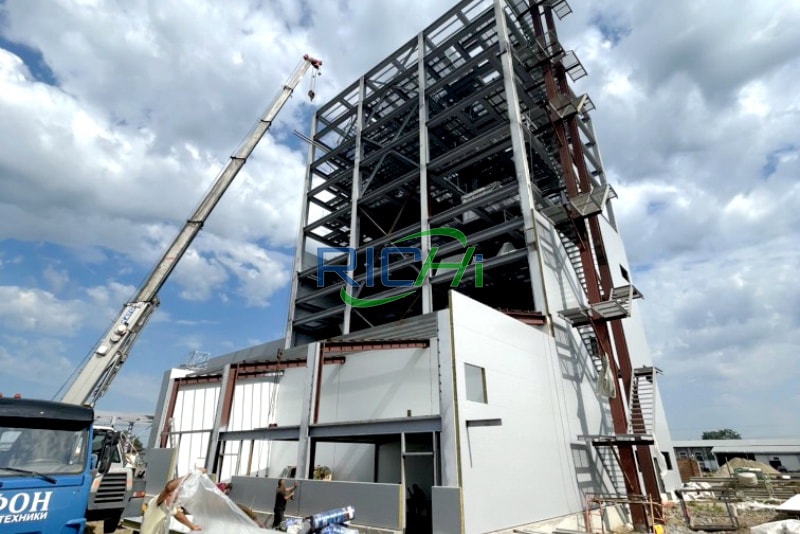
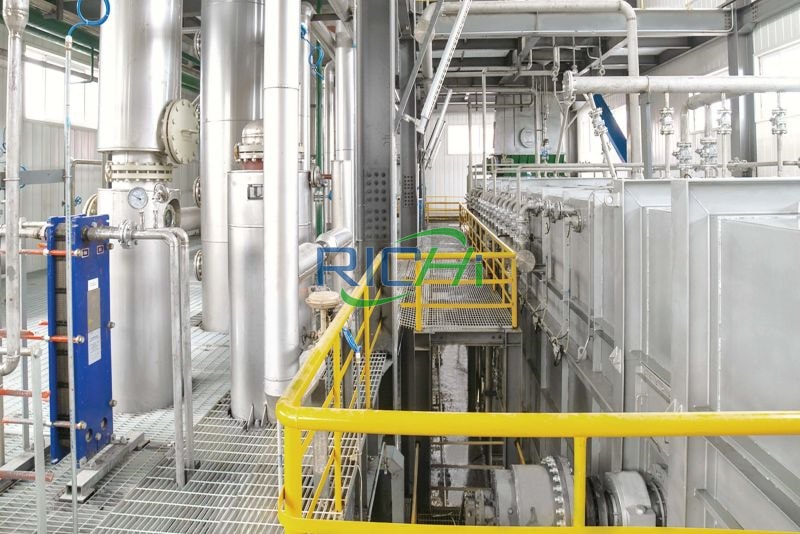
In actual operation, we also need to pay attention to the following points:
- Selection of raw materials. Fresh, mildew-free, and odor-free feed ingredients should be selected and properly stored to prevent moisture, mildew, etc.
- Equipment maintenance. Regularly inspect and clean hen feed plant equipment, and replace damaged parts in a timely manner to ensure normal operation of the equipment.
- Mastery of processing technology. Operators should have a deep understanding of hen feed processing techniques such as pelleting and extrusion, and can make adjustments according to the dietary needs of different types of animals to ensure a rational proportion of feed.
- Implementation of quality control. Designate a dedicated person to conduct quality testing of the hen feed, and handle unqualified feed in a timely manner to avoid harm to animals during use.
The above key technologies and practical experience are only the tip of the iceberg in laying hen feed production.
At the same time, in actual operations of hen feed plant, you also need to constantly summarize experience and carry out technological updates and improvements based on market demand and animal nutrition development trends to adapt to the changing market environment.

Batching accuracy and control method of hen feed plant
The quality stability of pellets is one of the important factors to ensure product quality. In the hen poultry feed production line, batching accuracy and control are key factors affecting product quality stability. By taking appropriate measures and using effective control methods, the batching accuracy and control of the hen feed plant can be improved to ensure product quality consistency.
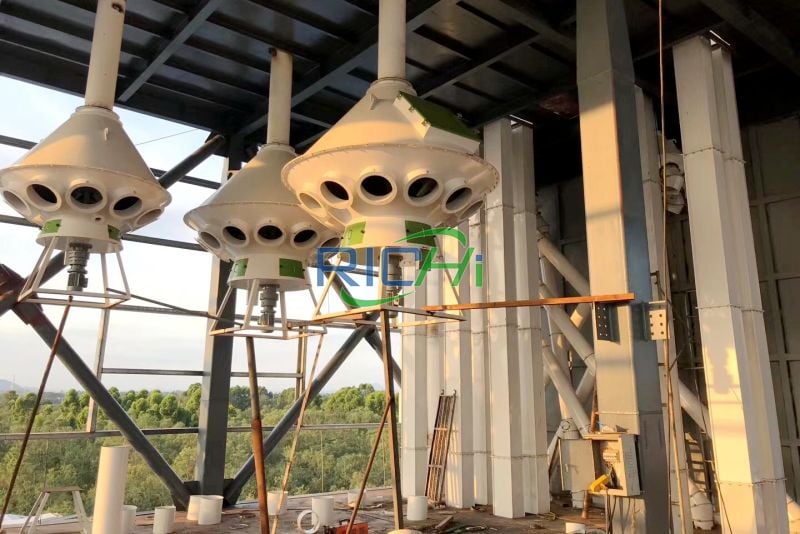
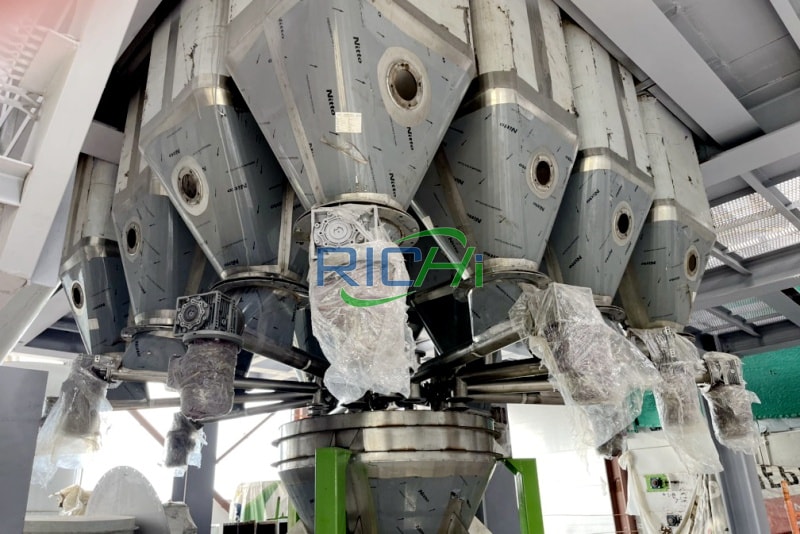
The following are some key methods and control strategies that can be used to improve the quality stability of hen feed plants.
- Accurate raw material measurement:
Ensure the use of precision weighing equipment and accurate sensors to accurately measure the input of raw materials. Regularly calibrate and maintain weighing equipment to ensure its accuracy and stability. - Optimization of ingredient ratio:
According to product formula and process requirements, the ingredient ratio should be reasonably optimized. Taking into account the characteristics and interactions of raw materials, ensure the correct proportion and uniform mixing of various raw materials, thereby improving the quality stability of the hen feed product. - Application of automatic control system:
Introduce advanced automatic control system to realize automatic control and precise adjustment of the batching process. Through real-time monitoring and feedback control, batching parameters can be adjusted in time to ensure batching accuracy and stability. - Real-time data monitoring and analysis:
Establish a real-time data monitoring system to monitor and record key parameters in the batching process. Through data analysis, deviations and anomalies are discovered in a timely manner and corresponding corrective measures are taken to ensure the accuracy and stability of ingredients. - Strict operating procedures and standard operating procedures:
Establish strict operating procedures and standard operating procedures to provide training and guidance to ingredients personnel. Ensure operators follow prescribed steps and requirements to reduce human errors and variability. - Regular quality inspection and feedback:
Establish a regular quality inspection and feedback mechanism to conduct quality inspection and analysis of the produced pellets. Based on the test results, batching parameters and control strategies are adjusted in a timely manner to improve hen feed quality stability and product consistency. - Supply chain management and collaboration with partners:
Establish close cooperative relationships with suppliers to ensure the quality and stable supply of raw materials. Share information and data to achieve collaborative management of the supply chain, thereby improving ingredient accuracy and stability. - Continuous improvement and innovation:
Continuous improvement is the key to improving hen feed quality stability. Through continuous improvement and innovation, we continue to seek optimization and innovation of batching accuracy and control methods to enhance the quality stability and competitiveness of the hen feed plant.
Through the above methods and control strategies, the batching accuracy and control level of the hen feed plant can be effectively improved, and quality stability and product consistency can be achieved.
At the same time, continuous improvement and innovation are also key. We must constantly seek new methods and technologies to adapt to market needs and challenges and maintain our leading position.
